User Manual
Table of Contents
Table of Contents ........................................................................................................................ 1
Congratulations! .............................................................................................................................. 8
You are using your new Device. ............................................................................................. 8
Getting Around ....................................................................................................................... 8
Display .................................................................................................................................... 9
Wireless Access ...................................................................................................................... 9
Start Using the Device Quickly .............................................................................................. 9
Your Choice of Text Size, Typeface, and Line Spacing......................................................... 9
Your Choice of Number of Words per Line ......................................................................... 10
Adjust Screen Rotation ......................................................................................................... 10
Use PDF Files ....................................................................................................................... 10
Let the Device [feature name] ............................................................................................... 11
Let the Device [feature name] ............................................................................................... 11
Look It Up ............................................................................................................................. 11
Take It All with You ............................................................................................................. 11
Shop Anytime, Anywhere ..................................................................................................... 11
Automatic Delivery ............................................................................................................... 12
Peruse Your [Content] .......................................................................................................... 12
Search Your World ............................................................................................................... 12
Collections ............................................................................................................................ 12
[feature name] Your Favorite Passages ................................................................................ 12
[describe feature] .................................................................................................................. 12
[Feature Name] ..................................................................................................................... 12
[Describe feature].................................................................................................................. 12
Bookmark s ........................................................................................................................... 12
Add Your Own Notes ........................................................................................................... 13
[feature name] ....................................................................................................................... 13
[describe feature] .................................................................................................................. 13
[feature name] ....................................................................................................................... 13
[describe feature] .................................................................................................................. 13
Learning More ...................................................................................................................... 13
* * *............................................................................................................................................... 14
CHAPTER 1 Getting Started with Your Device ...................................................................... 15
1.1 Views of the Device ............................................................................................................ 15
Front View ............................................................................................................................ 15
Back View ............................................................................................................................. 16
Bottom View ......................................................................................................................... 16
1.2 Getting Around ................................................................................................................... 18
Using the Buttons .................................................................................................................. 18
Using the Menus ................................................................................................................... 18
1.3 Entering Text ...................................................................................................................... 19
Lowercase and Uppercase Letters ........................................................................................ 19
Numbers, Punctuation, and Symbols .................................................................................... 20
1.4 Screen Rotation ................................................................................................................... 20
1.5 Status Indicators .................................................................................................................. 21
Wireless Status Indicators ..................................................................................................... 21
Battery Status Indicators ....................................................................................................... 21
Activity Indicator .................................................................................................................. 22
Determining Wireless Connection Strength ......................................................................... 22
Monitoring Download Status ................................................................................................ 22
1.6 Wireless Service Connectivity ............................................................................................ 23
U. S. Customers Traveling Outside the U. S. ....................................................................... 23
1.7 Using Wi-Fi ........................................................................................................................ 23
Connecting to a Wi-Fi Network ............................................................................................ 24
View the List of Wi-Fi Networks in Range of Your Location ............................................. 24
Manually Connecting to a Wi-Fi Network ........................................................................... 24
Add a New Wi-Fi Network ................................................................................................... 25
Entering Network Information .............................................................................................. 25
Forget a Wi-Fi Network ........................................................................................................ 26
* * *............................................................................................................................................... 26
CHAPTER 2 Getting to Know the Device Content.................................................................. 27
2.1 The [Screen Name] ............................................................................................................. 27
[Screen Name] Features ........................................................................................................ 27
[Feature Name] ..................................................................................................................... 29
The [Menu Name] Menu ...................................................................................................... 30
2.2 Organizing With Collections .............................................................................................. 31
Creating a Collection ............................................................................................................ 31
Adding an Item to a Collection ............................................................................................. 31
Adding Multiple Items to a Collection ................................................................................. 32
Viewing Collection Details ................................................................................................... 32
Renaming a Collection .......................................................................................................... 33
Deleting a Collection ............................................................................................................ 33
Adding Collections from Another Device ............................................................................ 33
2.3 Managing Your Content ..................................................................................................... 34
Removing Device Content .................................................................................................... 34
More about Managing Items ................................................................................................. 35
* * *............................................................................................................................................... 35
CHAPTER 3 ............................................................................................................................. 36
3.1 Types of Content ................................................................................................................. 36
[Describe Content Type][Audio Files] and Audio Content .................................................. 36
[Content type] ....................................................................................................................... 36
Personal Documents.............................................................................................................. 36
Background Music ................................................................................................................ 37
3.2 Content Formatting on the Device ...................................................................................... 37
Progress Indicator ................................................................................................................. 37
At [location], you can see where you are by glancing at the progress indicator. [Describe
progress indicator] ................................................................................................................ 37
Changing the Text Size, Typeface, and Line Spacing .......................................................... 37
Adjusting the Number of Words per Line ............................................................................ 38
Increasing the Size of a Picture ............................................................................................. 39
3.3 Moving from Place to Place ................................................................................................ 39
Using the Menu to Get Around ............................................................................................. 39
Navigating within [Content] ................................................................................................. 43
Selecting Internal Links ........................................................................................................ 45
Viewing a Table .................................................................................................................... 45
[Feature Name] ..................................................................................................................... 46
3.4 Looking Up Definitions ...................................................................................................... 46
The [feature name] Feature ................................................................................................... 46
3.5 Annotations ......................................................................................................................... 46
Using Bookmarks.................................................................................................................. 47
Using Highlights ................................................................................................................... 48
Displaying [feature name] in [Content] ................................................................................ 49
Using Notes ........................................................................................................................... 50
Using [feature name]............................................................................................................. 52
3.6 Sharing Notes and Highlights ............................................................................................. 53
3.7 PDF Files ............................................................................................................................ 54
Zooming into PDF Files or Adjusting the Contrast .............................................................. 55
Using the [Menu Name] Menu ............................................................................................. 55
[menu choice] — displays a page containing all of your current item's notes, highlights, and
bookmarks. ................................................................................................................................ 56
3.8 Listening to Audio Materials .............................................................................................. 56
[Audio Files] ......................................................................................................................... 57
Background Audio ................................................................................................................ 57
[Feature name] ...................................................................................................................... 58
* * *............................................................................................................................................... 59
CHAPTER 4 Searching on the Device ..................................................................................... 60
4.1 Introduction to Search ......................................................................................................... 60
Types of Searches ................................................................................................................. 60
Performing a Search .............................................................................................................. 60
4.2 Search Results Page ............................................................................................................ 61
Search Results for a Specific Item ........................................................................................ 62
Search Results for a Definition ............................................................................................. 62
4.3 Performing Remote Searches .............................................................................................. 63
Searching [Service Name] .................................................................................................... 63
Searching the Web ................................................................................................................ 63
Searching the Device Store ................................................................................................... 64
* * *............................................................................................................................................... 64
CHAPTER 5 The Device Store ................................................................................................ 65
5.1 Getting Started at the Store ................................................................................................. 65
Connecting to the Device Store ............................................................................................ 65
5.2 The Device Store Pages ...................................................................................................... 65
The Device Storefront ........................................................................................................... 65
The Store Menu..................................................................................................................... 66
Browsing the Store ................................................................................................................ 68
Getting the Details ................................................................................................................ 68
Adding Items to Your Wish List ........................................................................................... 70
5.3 Recommendations, Reviews, and Ratings .......................................................................... 71
Recommendations ................................................................................................................. 71
Looking Up Reviews ............................................................................................................ 71
Writing Your Own Ratings and Reviews ............................................................................. 71
5.4 Making Purchases ............................................................................................................... 72
Trying a Sample .................................................................................................................... 72
Buying Your Selections ........................................................................................................ 72
Returning an Item ................................................................................................................. 73
* * *............................................................................................................................................... 73
CHAPTER 6 Accessing the Web ............................................................................................. 74
6.1 Using the Web Browser ...................................................................................................... 74
Entering a URL ..................................................................................................................... 74
Using Bookmarks and Adding Your Own ............................................................................ 75
Using [Buttons] ..................................................................................................................... 75
Selecting Links, Buttons, and Boxes .................................................................................... 75
Zooming into Web Pages ...................................................................................................... 75
Optimizing the Web Browser ............................................................................................... 76
Using History ........................................................................................................................ 77
The Web Browser Menu ....................................................................................................... 77
6.2 Other Features ..................................................................................................................... 78
Downloading Files ................................................................................................................ 78
Web Browser Settings........................................................................................................... 78
* * *............................................................................................................................................... 78
CHAPTER 7 [Feature Name] ................................................................................................... 79
7.1 Adjusting Your Device Settings ......................................................................................... 79
Registering or Deregistering the Device ............................................................................... 80
Personalizing Your Device ................................................................................................... 82
Using [feature name]............................................................................................................. 82
Password - Protecting Your Device ...................................................................................... 83
Setting the Time .................................................................................................................... 84
Changing [Feature] ............................................................................................................... 84
[Feature name] Settings ........................................................................................................ 85
[Feature Name] ..................................................................................................................... 85
The [Menu Name] Menu ...................................................................................................... 86
Choosing Your Primary Dictionary ...................................................................................... 87
7.2 [Feature Name] ................................................................................................................... 87
7.2 Device Shortcuts ................................................................................................................. 88
Global Shortcuts.................................................................................................................... 88
[Screen Name] Shortcuts ...................................................................................................... 88
Using Shortcuts ..................................................................................................................... 88
PDF Shortcuts ....................................................................................................................... 89
Browser Shortcuts ................................................................................................................. 89
Audio Shortcuts .................................................................................................................... 89
* * *............................................................................................................................................... 89
CHAPTER 8 The Device and Your Computer ......................................................................... 90
8.1 Getting Started .................................................................................................................... 90
System Requirements............................................................................................................ 90
Making the Connection ......................................................................................................... 90
8.2 Transferring Files from Your Computer ............................................................................. 92
Managing Your Documents .................................................................................................. 92
Transferring Your [feature name] ......................................................................................... 92
8.3 Converting and Transferring Your Documents .................................................................. 92
Supported Formats for Conversion ....................................................................................... 92
[Feature] ................................................................................................................................ 92
8.4 [Audio Files] and MP3s ...................................................................................................... 93
Transferring MP3s ................................................................................................................ 94
* * *............................................................................................................................................... 94
CHAPTER 9 Your Device and Company ................................................................................ 95
9.1 Shopping for Content on the Company Website ................................................................ 95
Browsing the Device Store ................................................................................................... 95
Searching the Device Store ................................................................................................... 95
Getting the Details ................................................................................................................ 95
Ordering Content .................................................................................................................. 95
9.2 Managing Your Device on the Company Website ............................................................. 96
Downloading Content from Your Computer ........................................................................ 97
9.3 Contacting the Device Support ........................................................................................... 97
The Device Support Web Address ........................................................................................ 97
The Device Support E-mail Address .................................................................................... 97
The Device Support Phone Numbers .................................................................................... 97
* * *............................................................................................................................................... 98
CHAPTER 10 Transferring Content to Your New Device ...................................................... 99
10.1 Transferring [Content] ...................................................................................................... 99
10.2 Transferring Subscriptions .............................................................................................. 100
10.3 Transferring Personal Documents................................................................................... 100
10.4 Transferring [Audio files] ............................................................................................... 100
10.5 Transferring MP3s .......................................................................................................... 101
* * *............................................................................................................................................. 101
CHAPTER 11 Troubleshooting .............................................................................................. 102
* * *............................................................................................................................................. 105
APPENDIX ............................................................................................................................. 106
Safety and Compliance Information ....................................................................................... 106
Maintaining Your Device ....................................................................................................... 106
Servicing Your Device ........................................................................................................ 106
Battery Safety...................................................................................................................... 106
Headphone Safety ............................................................................................................... 106
Wireless Safety and Compliance ........................................................................................ 107
FCC Compliance Statement for Model Number D00901, FCC ID: X7N-0610................. 107
Information regarding Exposure to Radio Frequency Energy Exposure to Radio Frequency
Energy ................................................................................................................................. 108
Compliance Information for the Device Users Outside the U.S. ........................................ 108
Recycling the Device Properly ........................................................................................... 108
UL Certification Number .................................................................................................... 108
Product Specifications ............................................................................................................ 108
Patent Notices ..................................................................................................................... 109
Copyright and Trademark Notices ...................................................................................... 109
Other Language Versions ................................................................................................... 109
* * *............................................................................................................................................. 109

Thank you for purchasing the Device. You are reading the Welcome section of the Device User's
Guide. This section provides an overview of the Device and highlights a few basic features so
you can start using the Device as quickly as possible.
You can leave this guide at any time by pressing the [button name] button on your Device. To
turn to the next page, press one of the [button name] buttons.
If your Device was a gift, you will need to register it to your Company account in order to shop
in the Device Store. Please look at the instructions that came with your Device for information
on registering your Device.
Congratulations!
You are using your new Device.
If you haven't done so already, please follow the instructions that came with your Device and
plug your Device into a power source to charge the battery. The charge indicator light on the
bottom edge of your Device turns red and a [symbol name] appears on the [icon name] icon at
the top of the display. Charging the battery fully should take less than three hours and you can
continue using the Device while it charges.
Tip: The charge indicator light will turn green when the battery is fully charged.
If you prefer to read the Device User's Guide side-by-side with the Device, you can download
and print a PDF copy of the Device User's Guide from the internet.
Getting Around
You navigate the Device using the controller; [button names] buttons; and the keyboard.
To select a particular item such as a menu option or a specific word, use the controller to
highlight your choice and then press to select.
You can press the [button names] buttons to move forward or backward and press the [button
name] button to retrace your steps on your Device. Use the keyboard to type words or phrases
when searching your material or items in the Device Store. You can also use the keyboard to
create notes. All of these are covered in more detail later in this guide.
Display
The Device uses a high-resolution display technology.
Wireless Access
Using wireless access, the Company delivers content to your Device whenever and wherever you
want it. The Device connects to the wireless using Wi-Fi. The Device can also connect to the
wireless service using the 3G cellular network.
Using Wi-Fi allows you to connect to a Wi-Fi network at home, at work, at your favorite cafe, or
at Wi-Fi hotspots around the world. Using Wi-Fi also helps prolong battery life, offers faster
downloads, and allows [audio file] purchases to be delivered wirelessly to your Device, with no
computer required.
The Device uses the same technology as a cell phone to connect from anywhere that’s within a
3G coverage area. Your Device can connect using the slower EDGE and GPRS networks, but it
will automatically connect to the faster 3G network if there’s sufficient signal strength.
Start Using the Device Quickly
[include description]
Your Choice of Text Size, Typeface, and Line Spacing
To optimize your experience, the Device provides a quick way to adjust the text size, typeface,
and line spacing.
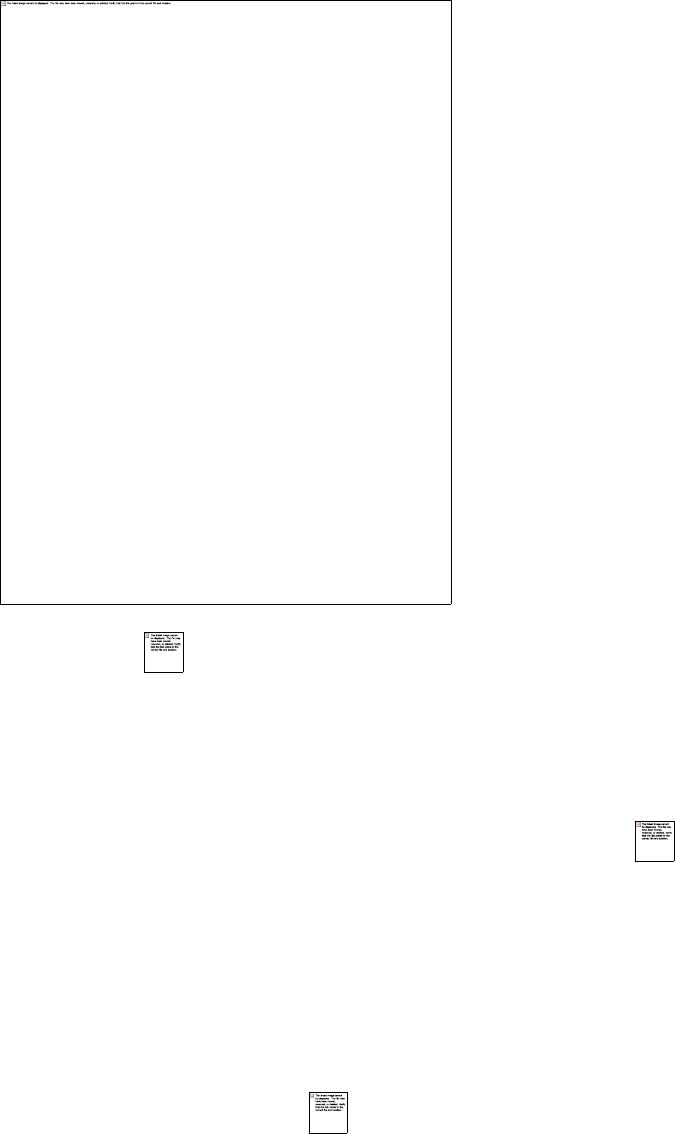
To try it now, press the [key name] key , use the controller to choose the size, typeface, and
line spacing you prefer and press the controller to select. The text changes to the new settings.
Repeat the same steps to adjust the text to the settings that are the most comfortable for you.
Your Choice of Number of Words per Line
You can also change the number of words per line on the screen. Press the [key name] key ,
use the controller to choose the number of words per line you prefer and press the controller to
select. This changes the width of the margins. You may find it preferable with fewer words per
line. Experiment to see what works best for you.
Adjust Screen Rotation
The Device screen image can be rotated so you can see the entire width of a web page or
magnify the page of a PDF file. You can lock your Device screen to a portrait or landscape
orientation to fit your position. Press the [key name] key , then use the controller to select
the screen rotation you want. Press the controller to select.
Use PDF Files

The Device can display a PDF document without losing the formatting of the original file.
[describe options]
Let the Device [feature name]
You can also choose to turn on an application which will [describe feature].
Let the Device [feature name]
Using [feature name], you can navigate your Device while the Device [describe feature][describe
feature].
Look It Up
Your Device includes a dictionary. You can easily look up a particular word without leaving the
content. Simply use the controller to navigate the [symbol name] in front of the word you want
defined. A definition of the word appears at the bottom of the screen. To view the full definition,
press the [key name] key on the keyboard. To return to the text you were viewing earlier,
press the [button name] button.
Take It All with You
Although the Device is about the size of a paperback book, it can store over a thousand digital
[types of content], which are referred to collectively as "content" throughout this guide. A copy
of all your [content] purchased from the Device Store are kept on the Company’s website.
To display a list of the content on your Device, press the [button name] button. Use the controller
to underline the item you want to open and then press the controller to open the item. To delete
content on your Device, use the controller to underline the item you want to delete. Press the
[button name] on the controller to select “[menu choice]” and then press the controller to
complete the removal of the item.
To restore deleted content back to your Device, the wireless must be on. From [screen name],
select "[menu choice]." This shows all of the content stored on the Company website. Underline
the item you want to move back to your Device, press the controller to select “[menu choice]”,
and then press the controller to start the transfer. The item re-downloads to your Device and
appears in the list of content in [screen name].
Shop Anytime, Anywhere
If you have wireless access and you select "[menu choice]" from any menu, the Device connects
you to a broad offering of material including [content]. You can browse by category or check out
the latest best sellers, new and noteworthy items, or your personalized recommendations. You
can see details about an item, read customer reviews, and even download free samples of
[content] you are interested in. If you want to buy an item, the Device uses secure connections
and then wireless technology delivers the item to your Device.
Automatic Delivery
Since the Device connects to the wireless network, we deliver your favorite [content] over the air
to your Device as soon as the [content] is available. For example, if you subscribe to the Device
[feature], the latest [content] is wirelessly delivered overnight so you have it each morning. Your
[content] follows you wherever you go, whether you are at home or on the road.
Peruse Your [Content]
Your Device supplies you with navigation shortcuts so that you can quickly zero in on items of
interest. By using the controller, you can advance to the next or previous item of interest or
display the item’s section list.
Search Your World
While you are in [screen name], the Device Store, or viewing content, you can use your Device's
[feature name] feature. From the keyboard, begin typing what you'd like to search for and then
using the controller, select where you’d like to search. If you begin your search while in [screen
name] or with open content, you have the option to search for that item in all of your [content].
You also have the option to focus your search to the built-in dictionary, the Device Store,
[Service Name], [Service Name], and the Web.
Collections
To personalize and organize items, you can add your [content] to collections on your [screen
name]. Create a new collection from the [screen name] by pressing the [button name] button and
selecting "[menu choice]", and then type a name for the collection. You can add as many items
as you wish to each collection, and you can even add an item to more than one collection for
more flexible organization.
[feature name] Your Favorite Passages
[describe feature]
[Feature Name]
[Describe feature]
Bookmark s
You can add a bookmark by pressing the [button name] button and selecting "[menu choice]."
You can see that the upper right corner of the page is dog-eared. The Device stores all your

bookmarks for the current content in your annotations. You can view them at any time by
pressing the [button name] button and selecting "[menu choice]."
Add Your Own Notes
Do you like to take notes and make comments? You can add notes to any of the content on the
Device. Company automatically stores all of your annotations in the "[feature name]" file and
backs them up at the Company website so they will not be lost.
As an example, this sentence is highlighted and has a note attached as indicated by the
superscripted number one to the right of this text.1 Using the controller, move the [symbol name]
over the notation number to see the note. To add your own note, move the [symbol name] to the
word where you want to add your thoughts, and begin typing your note. Then use the controller
again to highlight the "[button name]" button onscreen and press the controller to select. You can
later view, edit, or remove a note, or see all of your annotations by pressing the [button name]
button and selecting "[menu choice]."
[feature name]
[describe feature]
[feature name]
[describe feature]
[feature name]
[describe feature]
Learning More
This ends your brief introduction to just some of the capabilities on the Device. The chapters that
follow give a more complete overview of these and other features. Remember, you can always
search on a particular feature or learn more about how to do a particular task by opening this
guide and typing on the keyboard to activate search.
The Table of Contents for the Device User's Guide shows you all of the topics covered in this
guide. You can get to the table of contents by pressing the [button name] button from any page,
selecting "[menu choice]", then selecting '[menu choice]' and pressing the controller again.
You can also navigate by clicking an underlined word or words like the "[menu choice]" above.
Underlined words indicate a link to somewhere else in the material you are reading, like a
footnote, a chapter, or a web site. In the example above, when you navigate the controller over
one of the underlined words, a [icon name] icon will appear. Pressing the controller will take

you to the beginning of the table of contents. Press the [button name] button to go back to where
you were reading.
If you bought your Device with your Company account, it is already registered with your
account information and you are ready to go. When you go to the [screen name], check the top
left corner of the screen to see if your name is shown. If it says "[screen name]" instead of your
Company account name, you need to register your Device. To register, first press [button name]
to display the [screen name] and then press the [button name] button. Select "[menu choice]" and
then select "[menu choice]" on the page that appears to enter your Company user name and
password. If your Company user name or password contains characters not present on the Device
keyboard, press the [key name] key on the bottom of the keyboard to see a menu of the
extended characters and use the controller to select the character you require. Alternatively, you
can register your Device by visiting the Company website.
You can leave the Device User's Guide, or any [location], at any time by pressing the [button
name] button. If you are done, you can put your Device to sleep by [describe process]. Sleeping
your Device will extend battery life and also lock all of the keys and buttons so you don't
inadvertently press one while not using your Device. When your Device is asleep, you will see
[describe screen]. To turn off your Device completely, [describe process]. If you ever need
assistance, you can use the Web or your telephone to contact us. See Chapter 9 for all of the
Device Support contact options.
* * *
CHAPTER 1
Getting Started with Your Device
In the Welcome chapter of the Device User's Guide, you read about many of the things you can
do with your Device. This chapter reviews all of the physical features of the Device and covers
the basics of using the Device buttons, menus, and keyboard.
1.1 Views of the Device
Front View
The front of your Device contains the screen the keyboard, and the navigation controls.
<<add image and callouts for buttons, Controller>>
[Button name] button — takes you to the previous page in your material. Press and hold the
[button name] button to continuously page backward. The [button name] button is located
[location].
[Button name] button — takes you to the next page in your material. Press and hold the [button
name] button to continuously page forward. The [button name] button is located [location].
[Button name] button — shows content stored on your Device as well as content archived at
the Company website. The [button name] button is located [location].
[Button name] button — displays application and navigation choices that are related to the
screen you are viewing. The [button name] button is located [location].
Controller — selects an item or action when you press the center of the controller. Moves the
on-screen highlight or [symbol name] up and down when you press [button names]. Moves the
on-screen highlight or [symbol name] side-to-side when you press the [button names]. Press and
hold down on [button name] to accelerate the [symbol name] movement, making it faster to
navigate through lists or text. The controller is located [location].
Keyboard — use to enter search terms, notes in your content, URLs for Web sites, etc.
[Button name] button — retraces your steps on the Device just like the [button name] button on
a web browser. For example, you can follow a link and then press the [button name] button to
return to your place. The [button name] button is located [location].

[Key name] key — presents a menu of punctuation marks, symbols, and numbers. Use the
controller to select the desired symbol or number and press [button name] to select. The [key
name] key is located [location].
[Key name] key — adjusts font size, typeface, line spacing, and number of words per line to
suit your preference. Also allows you to turn on/off [feature name], zoom into PDF documents
and adjust their contrast, and to change the screen rotation settings. The [key name] key is
located [location].
Back View
[location] of your Device contains stereo speakers for audio content. The speakers are located
[location].
<<add image and callouts for Speakers>>
Bottom View
The bottom of your Device contains [features].

<<Add callouts for [features]>>
Volume controls — controls the headphone or speaker volume for [audio files], background
music, [feature name], and [feature name]. The volume controls are located [location].
Headphone jack— plug in headphones to listen to an [audio file], background music, content
read aloud through [feature name], or [feature name]. Attaching headphones turns off the built-in
speakers. The headphone jack is located [location].
Micro-USB/Power port— attach the USB cord that came with your Device into the micro-
USB/power port and into the Device power adapter*. The micro-USB/Power port is located
[location]. Plug the adapter into a U.S.-compatible electrical outlet to charge the Device battery.
You can also charge your Device by detaching the USB cord from the power adapter and
connecting it to a computer's USB port or powered USB hub. The charging status light will turn
red, indicating that the battery is charging; you can continue to use your Device while it charges.
A green light indicates that the battery is fully charged.
Check to make sure the power adapter is not covered by anything that could cause it to overheat.
If the charge indicator light does not light up, make sure that the USB cable is fully inserted into
your Device and the power adapter or USB port. If the Device still is not charging, try another
electrical outlet or USB port.
To transfer content between your computer and your Device, connect the provided USB cable to
the Device and to the computer's USB port.
Power Switch — puts your Device to sleep, wakes it up, and turns your Device on or off. The
power switch is located [location]. To put your Device to sleep, [describe process]. While your
Device is asleep, other keys and buttons are locked. To turn your Device off, [describe process].
To wake up or turn on your Device, [describe process]. If you have set up the Device password,
you will be prompted to enter the password after turning on your Device or waking it from sleep.
If your Device does not power on or is unresponsive during use, try resetting the Device by
disconnecting your Device from any power source or USB port, and then [describe process].
Tip: Your Device will also go to sleep by itself after [__] minutes if you are not using it. If
your Device had wireless on prior to going to sleep, it will continue to receive your regularly
scheduled subscriptions while in sleep.
Charge indicator light — indicates the battery status while your Device is charging. The charge
indicator light turns from red to green when the battery is fully charged. The charge indicator
light is located [location].
* Not all configurations ship with a power adapter.

1.2 Getting Around
To get around on your Device, you use the buttons, menus, and the keyboard—all of which are
explained here.
Using the Buttons
In the Welcome section you learned about the navigation buttons. For an explanation of what
each button does, see Front View.
Using the Menus
In addition to the physical buttons, you also navigate the Device using the menus. The Device's
menus are context sensitive, but they all work the same way.
You use the controller to navigate within the menu and press the controller to select an item.
The illustration below shows the [menu name] menu; the bold line under "[menu choice]"
indicates that it is ready to be selected.
The [menu name] Menu
You can display a menu from any screen on your Device. When you press the [button name]
button, it displays choices related to the screen you are viewing. The sample screen below shows
you the screen you would typically see when you press the [button name] button.
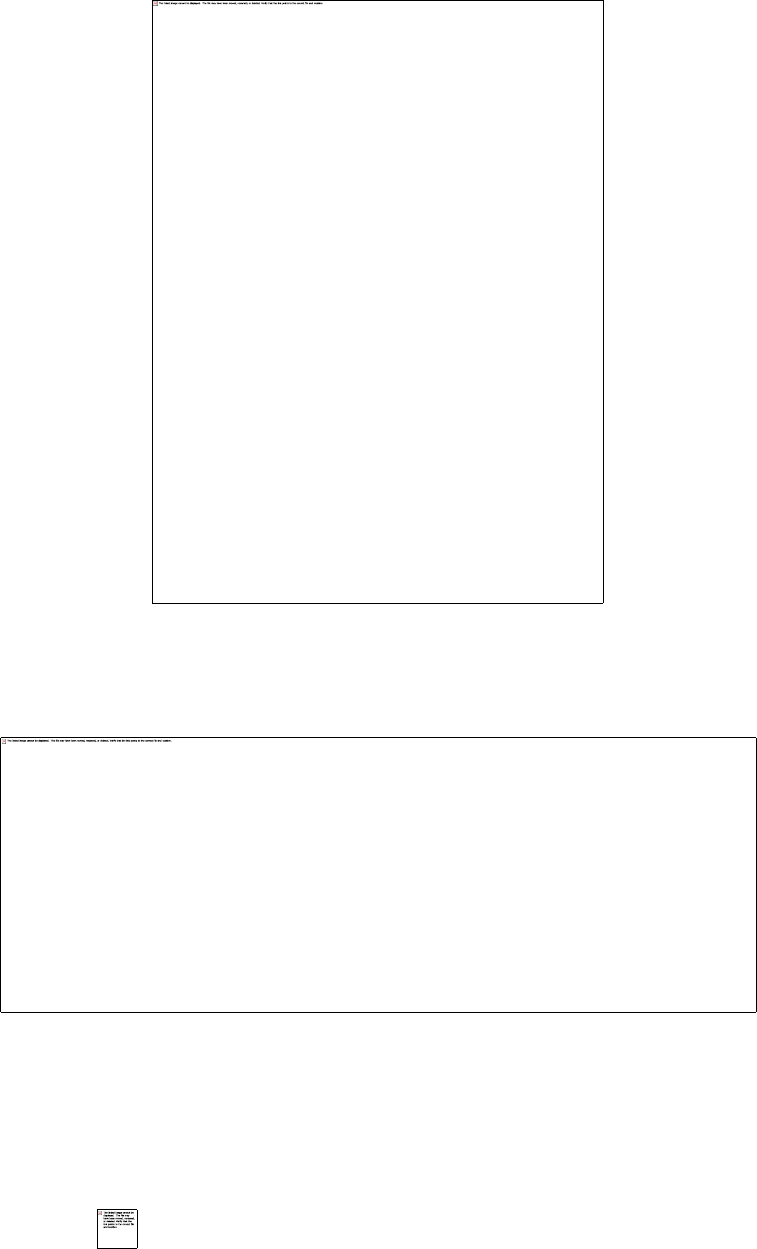
1.3 Entering Text
To use the Device keyboard, most people find it easiest to hold the Device in both hands, and use
the tips of their thumbs to press the keys.
<<add callouts to [key name][keys]>>
Lowercase and Uppercase Letters
To enter lowercase letters, press the appropriate letter key. To enter uppercase letters, hold down
the [key name] key , and then press the desired letter key like you do on your computer
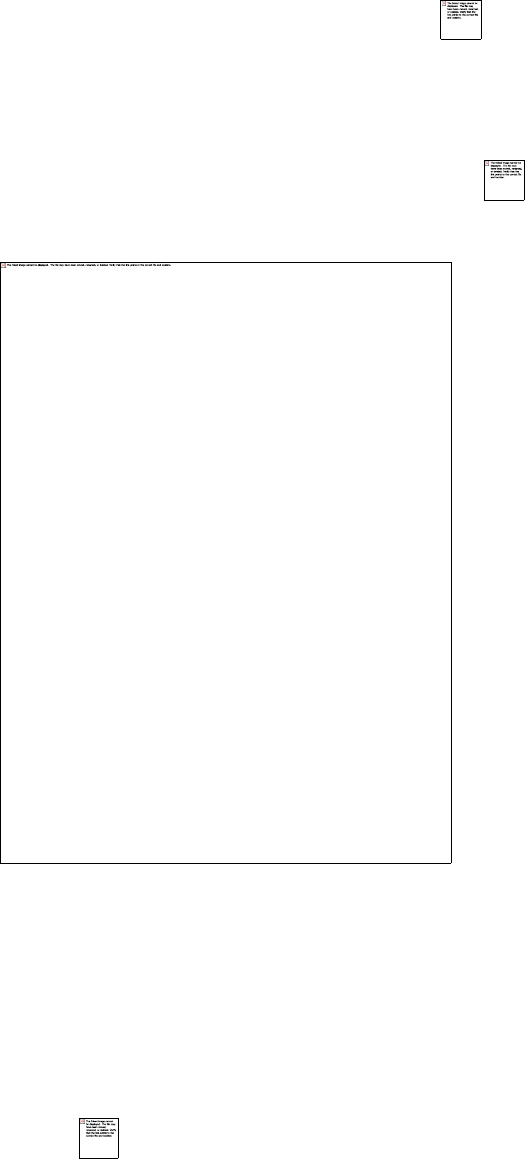
keyboard. Alternatively, you can press and release the [key name] key and then press the
desired letter. Only the next letter will be capitalized. The [key name] key is located [location].
Numbers, Punctuation, and Symbols
To enter a punctuation mark, symbol, or number, press the [key name] key located
[location]. You will see a menu of punctuation marks, symbols, and numbers.
Use the controller to choose the character you want and it will appear in your text entry box.
1.4 Screen Rotation
The Device screen image can be rotated so you can see the entire width of a web page. The
buttons work the same in either rotation, but the controller movements are switched to match the
rotation.
To lock your screen into portrait or landscape mode, follow these steps:
1. Press the [key name] key located on the bottom row of the keyboard. [Menu choice]
is displayed at the bottom of the menu.
2. Move the controller to select one of the options to lock the display in a set orientation.
3. Press the controller to confirm your choice.

Note: You can view the Device Store pages only in portrait mode.
1.5 Status Indicators
At the top of every screen, you see the wireless and battery life status indicators to keep you in
the know.
Wireless Status Indicators
The wireless status indicator shows you whether the wireless is turned on or off, the signal
strength of your wireless, and the connection speed. Here are the possible indicators and their
meanings.
The wireless is active and your Device has a strong signal. The more bars that are filled in with
black, the stronger the wireless signal. Note that a weak signal can increase power consumption.
None of the bars are filled in. This means the wireless signal strength is too low to connect. You
will not be able to connect to the Device Store or web browser, register your Device, retrieve
content from [feature name], receive your subscriptions, or [describe feature].
The bars are filled. This means wireless is checking for signal strength. This usually lasts less
than [__] seconds.
The wireless is turned off. You can turn it on by pressing the [button name] button, and using the
controller to navigate to "[menu choice]."
- The Device is connected to wireless using the 3G cellular network or one of the
slower networks (EDGE or GPRS). Your Device will automatically switch to the faster 3G
network when available.
[insert image] The Device connected to wireless using Wi-Fi.
When you display a menu, icons indicating the speed or type (Wi-Fi or 3G) of your wireless
appear to the left side of the signal bars.
Battery Status Indicators
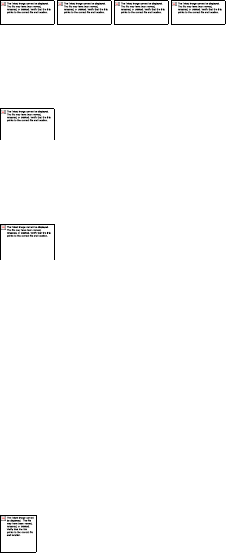
You have your Device plugged into power and the battery is either charging or is fully charged.
The charge indicator light on the bottom of your Device turns from red to green when the battery
is fully charged. Note that if your Device is plugged into a low powered USB port such as those
found on some keyboards or older computers, you will only derive enough charge to avoid
depleting the battery but not enough to recharge it.
The images above show the various states of the battery as it discharges. As you deplete the
battery, less of the battery indicator will be filled in.
The battery is too low to power wireless. You must charge your Device battery to restore
wireless service.
The battery state cannot be determined. Restart your Device so that the battery state can be
accurately determined. If the [symbol] continues to be displayed after a restart then contact
Customer Support.
Keep in mind that subscribing to [content] may increase power consumption and decrease the
battery life. Weak signal coverage can also increase power consumption.
Activity Indicator
Appears in the [location] when the Device is busy downloading new content, checking for new
items, searching for an item, opening a large PDF file, or loading a web page.
Determining Wireless Connection Strength
When you’re connected to wireless, connection type and connection strength indicators appear in
the [location]. The more bars you see, the stronger the wireless connection.
<<show screenshot with callouts to connection type and wireless status indicator>>
Monitoring Download Status
If one or more items are in the process of being downloaded from the Device Store to your
Device, you can monitor the download progress. From [screen name], press [button name] and
select “[menu choice]” to display a list of the items that are in the process of downloading and
their download progress. (This option is not available unless items are in the process of
downloading.)
Once downloading is complete, your items automatically appear in [screen name]. If
downloading is interrupted for any reason (for example, if you move out of wireless range), your
items will automatically resume downloading when your Device re-establishes a wireless service
connection.
1.6 Wireless Service Connectivity
For many activities, your Device does not need to connect to the wireless service. However,
some tasks such as browsing or searching the Device store and purchasing content do require a
wireless connection.
Your Device automatically scans for available Wi-Fi networks and lets you choose the one you
want to connect to. Connectivity is automatic, so if you see solid bars for the wireless status
indicator in the [location], your Device is already connected to wireless using 3G.
Your Device can connect to a Wi-Fi network at home, at work, at your favorite cafe, or at Wi-Fi
hotspots around the world. Connecting through Wi-Fi helps prolong battery life, offers faster
downloads, and allows your [content] purchases to be delivered wirelessly to your Device, with
no computer required.
U. S. Customers Traveling Outside the U. S.
For U. S. customers traveling outside the United States, there is no charge to have your [content]
delivered to your Device via Wi-Fi. If no Wi-Fi is available at your current location, you can still
avoid international delivery fees by purchasing items in the Device Store using your computer
and then transferring them to your Device via USB. See Chapter 8 for more information on using
your computer to transfer items to your Device.
For U.S. customers traveling with the Device outside the United States, if you want to avoid any
international 3G delivery fees, make sure you only connect wirelessly via Wi-Fi. Alternatively,
you can request to have your [content] delivered to your Device via 3G if you sign up for the
[feature name]. When you leave the U. S., the Company automatically sends a notice to your
Device [screen name] screen with instructions on how to sign up for the [feature name].
1.7 Using Wi-Fi
The Device automatically detects Wi-Fi networks and hotspots that are in range of your current
location and that broadcast their network name. Initially, the Device does not automatically
connect to a Wi-Fi network, but lets you choose the one you want to connect to. Once you
connect to a Wi-Fi network at a particular location, the Device automatically connects to it
whenever you return to that location.
Connecting to a Wi-Fi Network
You can try to connect to a Wi-Fi network when your Device prompts you to do so (for example,
in order to shop in the Device Store). If your Device detects several networks but none that you
have previously connected to, you will be able to choose one from a list of available networks. If
no Wi-Fi networks are available at your current location, you can try again later when you are in
a location that offers Wi-Fi access.
You can set up a Wi-Fi network at locations you typically visit that offer Wi-Fi access, such as
your office, school, home, or the Wi-Fi hotspot at your favorite cafe. Whenever you set up a Wi-
Fi network, the Device saves the settings for that network, so that when you later return to that
location, the Device automatically connects to the same Wi-Fi network.
View the List of Wi-Fi Networks in Range of Your Location
In order to view the list of detected networks, you must be in range of one or more Wi-Fi
networks that broadcast their network name.
To view the list of detected networks that are in range of your location:
1. Press the [button name] button, and then press the [button name] button.
2. Navigate to “[menu choice]” by moving the controller down, then press the controller to
select.
3. Select “[menu choice]” next to “[menu choice]” to display a list of detected Wi-Fi networks.
You may have to wait a moment as your Device detects networks in range.
Tip: The Device automatically scans for available Wi-Fi networks at 1-minute intervals. To
rescan for available networks at any time, select “[menu choice]”.
<<add image and callout “[menu choices]”>>
If your Device is currently connected to a Wi-Fi network, that network has the word “[menu
choice]” next to it in the list of available networks.
Manually Connecting to a Wi-Fi Network
Your Device can connect to Wi-Fi networks or hotspots that use the [standards] standard. The
Device cannot connect to ad-hoc Wi-Fi networks (networks that allow peer-to-peer connections
without a wireless access point).
To manually connect to a Wi-Fi network, follow these steps:
1. Press the [button name] button, then press the [button name] button.
1. Navigate to “[menu choice]” by moving the controller down, then press the controller to
select.
3. Select “[menu choice]” next to “[menu choice]” to display a list of detected Wi-Fi networks.
You may have to wait a moment as your Device detects networks in range.
Tip: To rescan for available networks, press the [button name] button and select “[menu
choice]”.
4. Select a network to connect to. Networks that require you to enter a password are listed with
a lock symbol <<show icon for lock symbol>>.
5. If necessary, enter the Wi-Fi network password, and choose “[menu choice]”. Press the [key
name] key to enter numbers or characters not present on the Device keyboard.
Once you’re connected to a Wi-Fi network, your Device automatically connects to it again
(remembers it) whenever that network is in range. If more than one previously used network is in
range, your Device connects to the network that was most recently used.
Add a New Wi-Fi Network
If you don’t see the network you want to connect to in the list of detected networks, you can add
it by choosing “[menu choice]” at the bottom of the list of detected networks.
<<add screenshot of network list, callout to [menu choice]>>
To add a new Wi-Fi network, follow these steps:
1. Make sure you are within range of the network you want to add.
2. Press the [button name] button, then press the [button name] button.
3. Navigate to “[menu choice]” by moving the controller down, then press the controller to
select.
4. Select “[menu choice]” next to “[menu choice]” to display a list of detected Wi-Fi
networks.
5. Move the controller down to “[menu choice]” and press to select.
6. Enter the name of the Wi-Fi network that you want to add.
7. Enter the password. Press the [key name] key to enter numbers or characters not present
on the Device keyboard.
8. Choose [menu choice]. The Device connects to the new Wi-Fi network.
If your Device fails to connect to the new Wi-Fi network, it will display an “[message name]”
message. You can try manually entering all the network information for the Wi-Fi network by
choosing “[menu choice]” when you see the “[message name]” message, or by following the
steps described under “[menu choice]”. If you don’t know the network information, try
connecting to a different network.
Entering Network Information
If you manage a Wi-Fi network and know the network information, or if you were not able to
connect to a new Wi-Fi network that you tried to add, you can manually enter the network
information so that the Device can try to connect to the new Wi-Fi network. You must be within
range of the network that you want to add. For more information, see “Wi-Fi Network Settings”
in Chapter 7. If you don’t know the network settings, try connecting to a different Wi-Fi
network.
Forget a Wi-Fi Network
You can tell the Device to forget a Wi-Fi network so that your Device doesn’t connect to it
automatically in the future. You might want to forget a Wi-Fi network if after you connect, you
realize you don’t want to use that network and instead you want to connect to a different one.
Keep in mind that if you tell the Device to forget a Wi-Fi network, your Device will not
automatically connect to it the next time you are within range of that network.
To forget a Wi-Fi network, follow these steps:
1. Press the [button name] button, then press the [button name] button.
2. Navigate to “[menu choice]” by moving the controller down, then press the controller to
select.
3. Select “[menu choice]” next to “[menu choice]” to display a list of detected Wi-Fi
networks. You may have to wait a moment as your Device detects networks in range. The
Wi-Fi network you are currently connected to displays the word “[menu choice]” next to
it in the list of available networks.
4. Choose “[menu choice]” to disconnect from the network.
* * *
CHAPTER 2
Getting to Know the Device Content
The Device [screen name] gives you an overall picture of what you currently have on your
Device. It also allows you to remove content from your Device and to move content from
Company to your Device. Read below for more details.
2.1 The [Screen Name]
Your [screen name] displays a list of all of your Device materials. It serves as a personal
repository for all of your material, as well as a starting point to access other Device features.
To display the [screen name], press the [button name] button on the [location]. By default, the
[screen name] lists all of the items that you have on your Device beginning with the most
recently viewed (or acquired) items. Each type of content has a slightly different description and
label. You can read more about the types of content available in Chapter 3.
[Content]
[Describe content].
[Content]
[Describe content].
Collections
Collection names appear in an italicized font to differentiate them from [content]. The number of
items in each collection is displayed in parentheses to the [location].
[Content]
[Describe content].
[Audio files]
[Audio files] will be labeled as audio content.
PDF Files
PDF files will be labeled as "pdf."
[Screen Name] Features
What you see on your [screen name] varies depending on what materials you have purchased,
and how you choose to sort this list. The screen sample and list below explain the features that
you may find on your [screen name].

The Device name — the name of your Device. You can edit this name on the [screen name]
screen.
[Feature name] — choose the order you want content displayed in [screen name].
[Feature name] — the title of the collection. The number of items in the collection is displayed
in parentheses.
[Feature name] — the "audio" label indicates the file is an [audio file].
[Feature name] — the [label name] label indicates the [content] is a sample. If you like it, you
can purchase the [content] from within the sample.
[Feature name] — [Describe feature].
[Feature name] — the [label name] label indicates the item has never been opened and is less
than 24 hours old. Once you open a new document or more than 24 hours has passed since the
item arrived on your Device, the [label name] label is removed.
[Feature name] — the [label name] label indicates the file is a PDF.
[Feature name] — the [feature description] shows [describe feature].
[Feature name] — the title of the item.

[Feature name] — stores older [content].
[Feature name] — items stored at the Company website that you can re-download to your
Device.
[Feature name] — indicates the total number of pages in [screen name]. Use the [button names]
button to navigate the pages.
[Feature Name]
The following screen shows the location of the [feature] options and the list below explains each
of the options. Moving the controller to the [direction] lets you change how to sort these items.
[Feature Option] — sorts your content by the most recently added or recently opened items
first.
[Feature Option] — sorts your content alphabetically by title of the item.
[Feature Option] — sorts your content alphabetically by the [category].
[Feature Option] — sorts your content by first displaying collections that have been most
recently used, then by items that have been most recently used but are not assigned to a
collection. Items that are assigned to a collection are not displayed.

Changing How the [Screen Name] is Sorted
By default, your content is sorted by most recent first, meaning all of the new items and the
content you are currently using are at the top. To change this option, follow these steps:
1. If you are not already on the [screen name], press the [button name] button.
2. Move the controller up until the [menu choice] are underlined.
3. Move the controller to [direction] to see the [menu choice].
4. Move the controller to underline how you want the items sorted.
5. Press the controller to select it. The sort order on the [screen name] changes immediately.
The [Menu Name] Menu
The [menu name] menu allows you to navigate to other places in the Device or to perform
specialized tasks. To display the [menu name] menu, press the [button name] button when your
[screen name] is displayed. The list below explains the menu.
[Menu Choice] — turns the wireless off or on. You can turn wireless off to prolong battery life.
Any operations that require a wireless connection will occur the next time you turn wireless on.
Turning wireless off applies to both 3G and Wi-Fi connections. If you turn wireless off, you
won’t be able to access the “[menu choice]” section in the [screen name] screen.
[Menu Choice] — takes you to the Device store.
[Menu Choice] — takes you to [location] where you can view and wirelessly re-download
content you are storing at the Company website.
[Menu Choice] — brings up the search text entry page for submitting a word or phrase to
search for.
[Menu Choice] — allows you to enter a name for a new collection of items.
[Menu Choice] — connects to the Company website to download any newly available items and
[describe feature].
[Menu Choice] — if one or more items are in the process of being downloaded from the Device
Store to your Device, you can choose “[menu choice]” to see the download status. This option
not available unless items are downloading.
[Menu Choice] — takes you to the [screen name] screen.
[Menu Choice] — takes you to the [screen name] where you can see and use some of the
prototypes we are working on.
2.2 Organizing With Collections
You can create collections to personalize the way you organize your [content], and to make it
easier to find items.
Creating a Collection
You can create as many collections as you need. To create a collection follow these steps:
1. If you are not already on the [screen name], press the [button name] button.
2. Press the [button name] button and use the controller to select "[menu choice]".
3. Use the keyboard to enter the name of your collection.
4. Use the controller to select "[menu choice]".
5. Your collection is created and displayed on the [screen name].
The very first time that you create a collection, the sort order changes to sort by collections on
the [screen name]. To change the sort order, move the controller up to underline "[menu
choice]", and then move the controller to the right to choose another sort option.
Adding an Item to a Collection
Collections give you the flexibility to add an item to as many collections as needed. For example,
you can add the same [content] to collections called "[menu choice]" and "[menu choice]".
To add an item to one or more collections, follow these steps:
1. If you are not already on the [screen name], press the [button name] button.
2. Use the controller to navigate to the item you want to add to a collection.
3. Move the controller to [direction] to view the item's detail page.
4. On the item's detail page, use the controller to select "[menu choice]"
5. A screen showing all of your collections and the number of items in each is displayed.
Use the controller to select each collection you want to add the item to. If you have many
collections you can use the [button names] buttons to see them all.
6. After you add the item to a collection the item count for the collection is increased and a
[symbol] appears to the [location] of the collection. You can also remove the item from a
collection by using the controller to select the collection again and the [symbol] will
disappear.
7. When you are done adding the item to your collections, use the controller to select [menu
choice] at the [location]. You can also press the [button names] buttons and your changes
will be saved.
Adding Multiple Items to a Collection
Collections also let you efficiently add multiple items to a single collection. This is useful for
organizing similar types of items into one collection in a single pass.
To add multiple items to a collection, follow these steps:
1. If you are not already on the [screen name], press the [button name] button.
2. Use the controller to navigate to the collection you want to add items to.
3. There are two ways to start the process:
Move the controller to the [direction] to view the collection's detail page. On the collection's
detail page use the controller to select "[menu choice]".
or
Use the controller to select the collection and see all the items in the collection. Press the [button
name] button and select "[menu choice]".
4. A screen showing all of your items is displayed. Use the controller to select each item
you want to add to the collection. If you have many items you can use the [button names]
buttons to see them all.
5. After you add each item to the collection a [symbol] appears [location]. You can also
remove the item from the collection by using the controller to select the item again and
the [symbol] will disappear.
6. When you are done adding the item to your collections, use the controller to select [menu
choice] at [location]. You can also press the [button names] buttons and your work will
be saved.
Viewing Collection Details
The collection details page lets you see information about a collection, the actions available for
the collection, and the cover of the most recently used item in the collection.
To view a collection's details, follow these steps:
1. If you are not already on the [screen name], press the [button name] button.
2. Use the controller to navigate to the collection.
3. Move the controller to the [direction] to view the collection's detail page.
4. Use the controller to select an action or press the [button name] button to exit.
Renaming a Collection
You can rename your collection if you made a mistake when creating it or if you want to update
it.
To rename a collection, follow these steps:
1. If you are not already on the [screen name], press the [button name] button.
2. Use the controller to navigate to the collection.
3. Move the controller to the [direction] to view the collection's detail page.
4. Use the controller to select "[menu choice]".
5. Use the keyboard and controller to edit the name of your collection.
6. After you finish editing the name, use the controller to select "[menu choice]".
Deleting a Collection
You can delete collections if you're no longer using them or you want to reorganize them.
Deleting a collection will never delete the items in the collection. Any item that is in a deleted
collection will stay on your Device. If the item is not associated with another collection, it will
reappear in the [screen name].
To delete a collection, follow these steps:
1. If you are not already on the [screen name], press the [button name] button.
2. Use the controller to navigate to the collection.
3. Move the controller to the [direction] to view the collection's detail page.
4. Use the controller to select "[menu choice]".
5. You will see a [describe symbol] asking you whether you want to delete the collection or
not.
6. Use the controller to select either "[menu choice]" or "[menu choice]".
Adding Collections from Another Device
If you have more than one Device associated with your Company account, you can add the
collections from another Device and merge them with collections on your current Device. This is
useful if you've set up an organization system on another Device and you want use it on your
current Device. The new collections will appear in [screen name] on your current Device. The
[content] from the other Device can be manually downloaded from [location] and will appear in
[screen name].
For example, suppose you have two Devices named [Device 1] and [Device 2]. If [Device 1]
already includes some collections, you can copy those collections along with their content
hierarchy and merge them with the collections on [Device 2]. After you copy the collections
from [Device 1] to [Device 2], then both the Devices will have the same collections.
If [Device 1] included "[file 1]" in the "[collection name]" collection, and "[file 1]" was already
on [Device 2] when collections from [Device 1] were added, "[file 1]" will automatically appear
in "[collection name]". If [Device 1] included "[file 2]" in the "[collection name]" collection, and
if you download "[file 2]" from [location] onto [Device 2], it will automatically appear in [screen
name].
Note that if you later decide to remove "[file 1]" from the "[collection name]" collection
on [Device 1], your changes are not synchronized with [Device 2]. "[File 1]" will remain in the
"[collection name]" collection on [Device 2].
To merge collections, follow these steps:
1. Manually transfer any files from [location] to your current Device. See Transferring
[Content] in Chapter 10 for more information.
2. On your current Device, if you are not already on the [screen name], press the [button
name] button.
3. Use the controller to select [menu choice]. If you have many items you may need to use
the [button name] button to locate [menu choice].
4. When in [location] use the controller to select the item labeled [menu choice].
5. In the [menu choice] view you will see a list of all the Devices that are associated with
your Company account. Use the controller to select the other Device that has the
collections you want to add. You can repeat this step for as many Devices as you wish to
add collections from.
6. After the collections are merged, press the [button name] button to return to the [screen
name]. You will see the collections that were copied over and merged together with the
collections already on your current Device.
2.3 Managing Your Content
All [content] you purchase are automatically backed up on the Company’s website. When you
remove [content] that you have purchased, it appears in [location]. You access [location] from
your [screen name]. To move content between [location] and [location], the wireless needs to be
on.
Removing Device Content
To remove content, follow these steps:
1. If you are not already on the [screen name], press the [button name] button.
2. In the list of the content already on your Device, move the controller to underline the
item you want to remove.
3. Move the controller to the [direction] to remove the item.
4. For [content] purchased from the Device Store you will see "[menu choice]" and for all
other content you will see "[menu choice]." Press the controller to remove the content. To
change your mind, move the controller [direction] to cancel.
5. For content other than [content] purchased from the Device Store, you will need to
confirm the deletion of the content by selecting "[menu choice]."
More about Managing Items
The Company also stores the most recent issues of your [content]. If you'd like to keep a copy of
[content] indefinitely, open the [content], press the [button name] button, and select "[menu
choice]"; you will then see the word "[menu choice]" to the left of the [content] title in [screen
name].
You can download items stored at the Company’s website any time you are within wireless
coverage. If you are not within coverage, the Device will automatically download the item when
you re-enter the wireless coverage.
Personal documents (including PDF files) sent to your Device are not backed up at the
Company’s website.
When you remove [content] you bought from Company, we automatically save all of your
annotations for the [content] in case you ever want to download it again. However, if you remove
[content] that is older than [number] days, [content] of any age, or an item you did not get from
the Company, any annotations you created on the Device for those items do not get saved. Your
"[file name]" file will still remain as a separate file containing [feature name] you added
regardless of whether the content is [content] or was purchased from the Company or not. See
Chapter 3 for more information.
* * *
CHAPTER 3
3.1 Types of Content
There are many types of material available for your Device such as [content]. If you want to
begin purchasing and downloading material, you can learn more in Chapter 5. The different
types of supported content are described below.
[Describe Content Type][Audio Files] and Audio Content
The Device Store offers thousands of [audio files]. In addition to [audio files], the Device Store
offers digital audio editions for magazines, radio shows, podcasts, stand-up comedy, and
speeches from icons who shape our culture, politics, and business world. Listen to [audio files]
through the Device's speakers or plug in your headphones for private listening. [Audio files] can
be delivered wirelessly via Wi-Fi to your Device, with no computer required. See Chapter 5 for
more information on purchasing [audio files].
If Wi-Fi is not available at your current location, you can still purchase an [audio file] using 3G ,
and your [audio file] purchase will automatically download to your Device the next time your
Device connects using Wi-Fi. Alternatively, you can download your [audio file] purchases to
your PC or Mac over your existing Internet connection and then transfer them to the Device
using USB. For more information on transferring [audio files] from your computer to your
Device, see Chapter 8.
[Content type]
The Device Store offers a selection of [content]. Subscriptions are delivered wirelessly to your
Device overnight so that the latest edition can arrive on your Device every morning, and every
[content] subscription starts with a free trial.
[Content type] The [content] Store offers an expanding selection of [content] to meet every
interest. As with [content], all [content] subscriptions are delivered wirelessly and start with a
free trial.
[Content type] The Device Store offers [content]. [Content] categories include business,
technology, sports, politics, culture, entertainment, humor, and science. [Content] is sent to you
wirelessly throughout the day, allowing you to keep current. All [content] subscriptions are
delivered wirelessly and start with a free trial.
Personal Documents
In addition to purchased content, you can read your personal documents on the Device.

The Device can display a PDF document without losing the formatting of the original file. You
can press the [key name] key to change the orientation of your display to widescreen
viewing. For more information on the unique aspects of reading PDF files on the Device, see
Section 3.7.
Additionally, if you have files formatted as [file formats], you can [describe options]. For more
information on transferring and converting your personal documents, see Chapter 8.
For details on fees, see the "[section name]" section of the [page name] page on the Company
website.
Background Music
If you like to listen to music while you use your Device, use your computer to transfer MP3 files
to the music folder on your Device. When you select "[menu choice]" from the [page name]
page, each of the songs will play in the order they were added to your Device.
3.2 Content Formatting on the Device
When you access [content] on the Device, you will find that the formatting generally follows the
[content]. If the [content] has a table of contents, it will appear in the Device. If the [content] has
[features], and so forth, these will be displayed.
When you first open an item, [describe screen shot].
When you go to [location] in the [content], [describe screen shot].
Progress Indicator
At [location], you can see where you are by glancing at the progress indicator. [Describe
progress indicator]
Changing the Text Size, Typeface, and Line Spacing
You can adjust the text settings to suit your preference. You have a choice of [number] sizes.
You can also change the typeface and line spacing to optimize your experience.
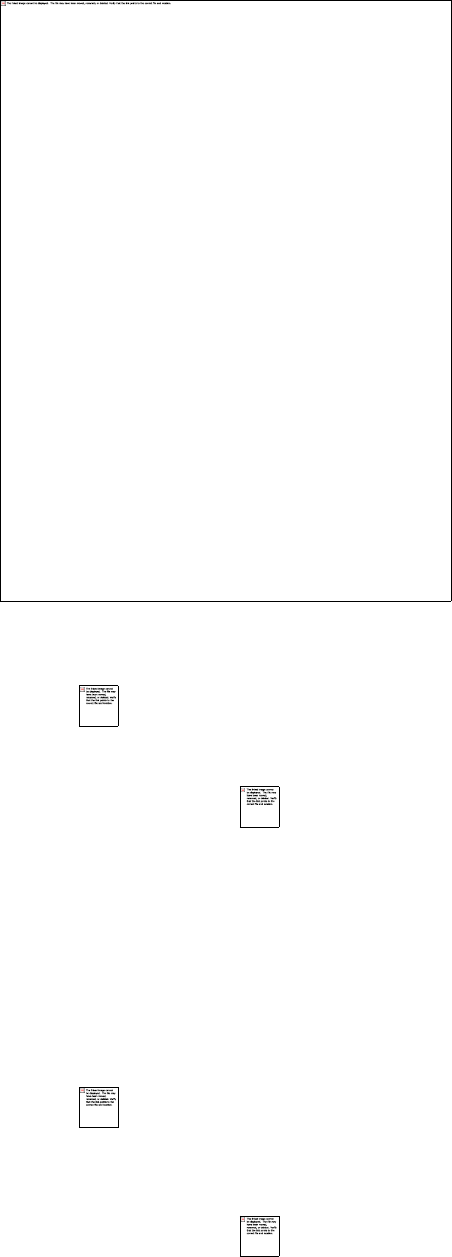
To pick the text size, typeface, or line spacing that you want to use, follow these steps:
1. Press the [key name] key located [location].
2. Use the controller to select the new text size, typeface, or line spacing that you want to
use (you see the changes immediately).
3. Press the controller or the [key name] key to confirm your choice.
Adjusting the Number of Words per Line
You can change the number of words per line to suit your preference. Adjusting the number of
words increases or decreases the size of the margins. You may find you read faster with fewer
words per line. Experiment to find what works best for you.
To pick the number of words per line you prefer, follow these steps:
1. Press the [key name] key located [location]. The words per line choices are displayed
below the text size choices.
2. Move the controller [direction] to underline the words per line option.
3. Move the controller [direction] to choose the option you want to use.
4. Press the controller or the [key name] key to confirm your choice.

Note: You cannot change the number of words per line in PDF files or in web browser.
Increasing the Size of a Picture
If you’d like to see a larger size of a picture or image you encounter in the material, simply
follow these steps to zoom temporarily on the image.
1. Use the controller to position the [symbol name] over the picture.
2. An image with a plus sign will appear on top of the picture.
3. Press the controller to zoom the image. You will see an expanded view of the picture that
rotates if necessary to maximize the use of the display.
4. Press the controller (or any key or button, except the [button name] button) to return to
your content.
3.3 Moving from Place to Place
There are several ways for you to get from place to place once you have opened your material.
Most often you will turn pages using the [button names] buttons (described in Chapter 1). You
can also get around by selecting locations from the item's menu, clicking on links in the content,
or by moving the controller [direction] to advance to [location].
Using the Menu to Get Around
To go to the menu, press the [button name] button. You will have slightly different options
depending on the content you are accessing. Examples of the menu options are described below.

If you are using [describe content], the menu shows the following options:
[menu choice] — turns off the wireless. When the wireless is off, this option will change to
"[menu choice]."
[menu choice] — takes you to the Device Store.
[menu choice] — connects to the Device Store, purchases, and downloads the [content] to your
Device. Only appears if you are accessing a sample from the Device Store.
[menu choice] — allows you to move to another location in the item. Choose one of these
options:
[menu choice] — takes you to the cover page of the item.
[menu choice] — takes you to the Table of Contents for the item.
[menu choice] — takes you to [location].
[menu choice] — enter a location number to jump to in the content. Press the [key name] key to
enter numbers.
[menu choice] — [describe functionality].
[menu choice] — connects to the Device Store and displays the item’s detail page.
[menu choice] — displays the search line at [location]. Additional details on how to conduct a
search are provided in Chapter 4.
[menu choice] — bookmarks your location. After selecting this option, the [location] will be
dog-eared and this menu option will change to "[menu choice]."
[menu choice] — puts you into annotation mode and displays a [symbol name] so you can
highlight a passage or create a note. Additional details on how to create a note or highlight are
provided later in this chapter.
[menu choice] — displays a page containing all of your current item's notes, highlights, and
bookmarks.
[menu choice]— displays a page containing all of your current item's highlights. This option is
dimmed if you've turned off this feature in [location].
If you are using [describe content], you will see the following different options:

[menu choice] — makes a copy of the entire item and adds it to your "[feature name]" file.
[menu choice] — designates the [content] as one to be stored in your Device until you remove it.
If you are using [describe content], you will see the following options:
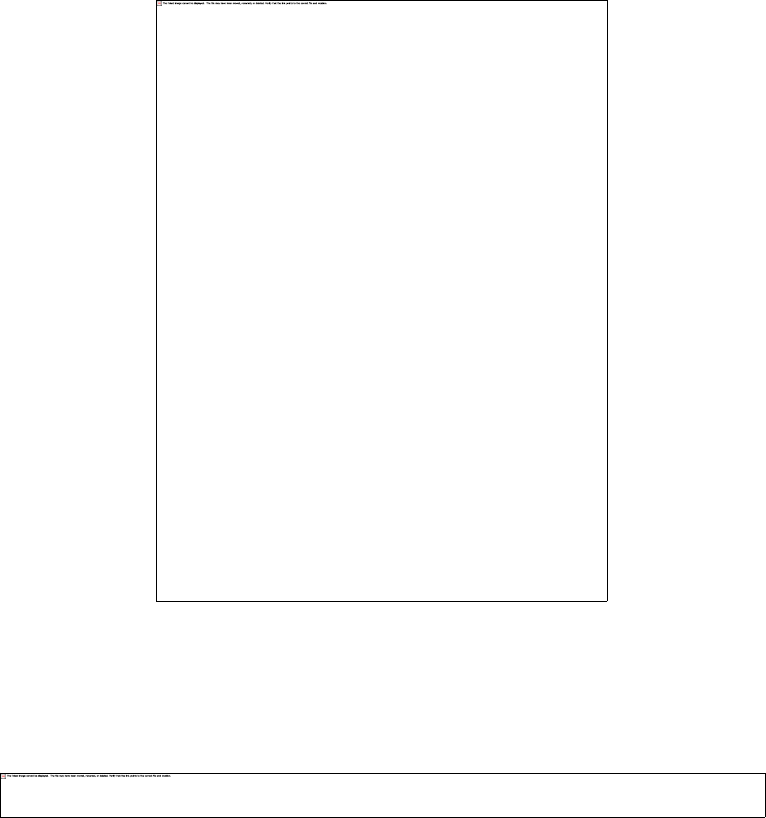
Navigating within [Content]
At [location] of [describe content] you will see options for quickly navigating within such
content. When viewing [describe content], you will see similar options for navigation.
[menu choice] — takes you to the previous [location] when you move the controller [direction].
[menu choice] — takes you to [location] when you press the controller.
[menu choice] — takes you to [location] when you press the controller.
[menu choice] — advances you to [location]when you move the controller [direction].
By default, "[menu choice]" for [content] is highlighted and when you press the controller, a list
of the sections will appear. If you are viewing [content], "[menu choice]" is highlighted and
pressing the controller shows a list of the [contents] content.

To navigate to a particular section, use the controller to underline the section title and then press
the controller to select. Selecting the number to the [direction] of the section title will take you to
[location] found within that section. To dismiss this view and return to [location], select "[menu
choice]" located [location].

To navigate to [location], simply move the controller to underline the [item] and press to select.
To dismiss this view, select "[menu choice]" located [location].
Selecting Internal Links
Your material may also contain links to other places in the document. Links are easy to spot
because they are underlined.
To select a link:
1. Move the controller [location].
2. The [symbol name] changes to look like this:
3. Press the controller to select the link.
4. The Device takes you to the linked location.
5. Press the [button name] button to go back to where you were.
Your material may also contain external links that take you to locations on the Web (if you have
the wireless turned on and are in range).
Viewing a Table
Your material may contain a large table that is not entirely contained within the screen. To see
the rest of the table, move the controller [direction] to bring up the [symbol name] and then place

the [symbol name] [location]. Move the controller [direction] to scroll through the rest of the
table.
[Feature Name]
[Describe feature]This technology is on by default. If you would like to turn it off, follow these
steps:
1. Go to
[insert links]
2. At the bottom of the page, click on the link, "[menu choice]"
3. Select "[menu choice]."
3.4 Looking Up Definitions
While [using content], you can see a brief definition of a word using the [feature name] feature.
You can choose the dictionary you want to use when you look up words while you are reading.
See Chapter 7 for details on how to change your default dictionary.
The [feature name] Feature
To see the definition of a particular word in your content, follow these steps:
1. Press [button name] on the controller to display the [symbol name]. In a PDF document,
press [button name] and choose “[menu choice]” to display the [symbol name] at
[location].
2. Use the controller to move the [symbol name] [location].
3. If the word is found in the dictionary, a definition extract appears [location].
4. To see the complete definition, press the [key name] key . You will now be placed in
the dictionary and can use [button names] to view other word definitions.
5. Press the [button name] button to return to your [previous location].
Tip: If you want to expand your search beyond the dictionary on your Device, you can use the
search feature to look for the word on [Service Name] or the Web. See Chapter 4 for more
information.
3.5 Annotations
You can add annotations to all of your [content]. Annotations can include notes you have
written, highlights you've marked, and bookmarks you've created. Bookmarks can only be
created in [content]. Annotations are specific to the content you are reading, so each [content]
has its own annotations. When you view the annotations, you see only those for the current
content. Note that when you create an annotation in [content], you will see the word "[word
name]" [location] of [location] in [screen name], indicating that the issue will be stored on your
Device until you remove it.

The Device also gathers the annotations and bookmarks you've made across all your various
[content] and places them in the "[feature name]" file in your [screen name]. See [menu choice]
for more information on [feature name].
The list below explains the types of annotations:
[Annotation type] — mark an entire page for later reference. You can create bookmarks in
[content].
[Annotation type] — mark a passage on a page for later reference.
[Annotation type] — add your thoughts about a passage.
The sections below explain how to add annotations.
Tip: All of your annotations and bookmarks are backed up on Company servers in case you
transfer your Device to another person or lose or break the Device. When you download
previously annotated [content] from the Company website, your annotations and [describe
feature] will come down with it. When you open the [content], [describe feature] and all of your
annotations will be included. Note that your "[feature name]" file is not listed as a separate
downloadable item.
Using Bookmarks
You may want to add bookmarks to your content. You can place a bookmark at any location, and
you can have multiple bookmarks in your content. You can return to a bookmarked location at
any time.
The Device stores all your bookmarks for the current content along with your annotations. You
can view them at any time by pressing the [button name] button and selecting "[menu choice]."
Placing a Bookmark
To place a bookmark in [content]:
1. Go to the location that you want to bookmark.
2. Press the [button name] button.
3. Move the controller [direction] until "[menu choice]" is underlined. Press the controller
to select.
4. A [icon name] icon in the [location] will appear, indicating that the location is
bookmarked.
Tip: You can quickly create a bookmark by either holding down the [key name] key and
pressing the "[key name]" key, or by moving the controller [location] to go into [symbol name]
mode and then pressing the controller twice.

Viewing Your Bookmarks
To view your bookmarks, press the [button name] button and select "[menu choice]." Bookmarks
are listed in the order in which they occur in the content. Each bookmark entry shows a location
number and the first line of the bookmarked location.
To go to a bookmark location, navigate to the bookmark and press the controller.
There is no limit to the number of bookmarks that you can set.
Removing a Bookmark
To remove a bookmark:
1. Go to the bookmarked page.
2. Press the [button name] button.
3. Move the controller [direction] until "[menu choice]" is underlined. Press the controller
to select. The bookmark is removed.
Tip: You can also remove a bookmark on the page by holding down the [key name] key
and pressing the "[key name]" key.
To remove several bookmarks at one time:
1. Press the [button name] button.
2. Move the controller [direction] until "[menu choice]" is underlined. Press the controller
to select it.
3. Using the controller, navigate to the bookmark you want to remove.
4. Press the [key name] key
5. Repeat steps 3 and 4 until you have removed all unwanted bookmarks.
6. Move the controller [direction] until the "[menu choice]" button is highlighted and press
the controller to exit. You can also exit this view by pressing the [button name] button.
Using Highlights
You can highlight text in the Device like you would use a highlighter pen on paper. The Device
stores all your highlights for the current content in your annotations. You can view them at any
time by pressing the [button name] button and selecting "[menu choice]." See Viewing Your
Annotations for more information.
The Device also stores everything you highlight in your "[feature name]" file.
Highlighting a Passage
To highlight one or more lines, follow these steps:
1. Press [button name] and choose “[menu choice]”. This puts the page into annotation
mode and displays [symbol name].
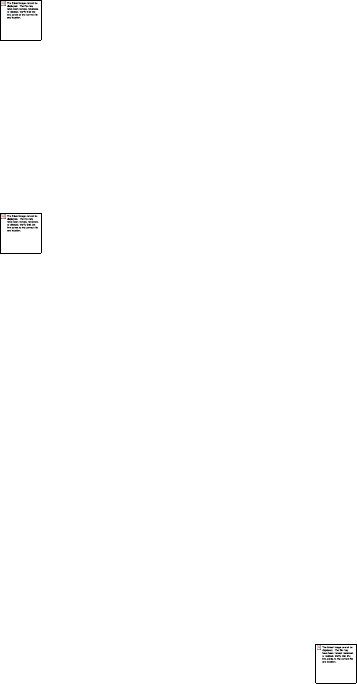
2. Use the controller to position [symbol name] where you want to start highlighting.
3. Press the controller.
4. Move the [symbol name] to where you want your highlight to end. You can turn pages if
you want to highlight text across multiple pages.
5. Press the controller at the place where you want the highlight to end.
6. Notice that the text you highlighted appears with a [color] underline.
Deleting a Highlight
To remove a highlight, follow these steps:
1. Press [button name] and choose “[menu choice]”. This puts the page into annotation
mode and displays [symbol name].
2. Navigate the [symbol name] over the highlight you want to remove.
3. Press the [key name] key .
To remove a highlight from your list of highlights, follow these steps:
1. Press the [button name] button.
2. Use the controller to underline "[menu choice]". Press the controller to select it.
3. Using the controller, navigate to the highlight you want to remove.
4. Press the [key name] key .
5. Use the controller to select "[menu choice]" press the controller to exit. You can also exit
this view by pressing the [button name] button.
Displaying [feature name] in [Content]
[Describe feature and functionality]
Viewing [feature name]
If [feature name] are turned on, you can [describe feature].
If [feature name] are turned on, you can press the [key name] key to hide or show [describe
feature].
To view a list of all [feature name], follow these steps:
1. While [describe activity], press the [button name] button.
2. Move the controller down until "[menu choice]" is underlined and press to select. (If this
option appears dimmed, you must first enable the [feature name] feature in [location].) A
list of the [feature name] appears. By default, the list is sorted by location.
3. To sort the list by the most [feature name], move the controller [direction] until the [menu
choice] options are underlined.
4. Move the controller to underline the [menu choice] sort option.
5. Press the controller to select [menu choice]. The list immediately changes to the new sort
order.
6. To close the [feature name] list, move the controller [direction] until "[menu choice]" is
selected, and then press the controller to close the list.
Updating [feature name]
[Feature name] may not be available for the [content] you already own. If [content] you already
own does not include them, you can check for it by following these steps:
1. Add an annotation to the [content], such as a bookmark, highlight, or note.
2. Press the [button name] button.
3. Press the [button name] button.
4. Move the controller [direction] to underline "[menu choice]" and press to select.
5. If there are [feature name] for the [content], then you will see them the next time you
access the [content]. If you press the [button name] button while accessing the [content]
and the "[menu choice]" option is still dimmed, then no [feature name] are available.
Using Notes
You can add notes on what you are using. The Device stores all your notes for the current
content in your annotations. You can view them at any time by pressing the [button name] button
and selecting "[menu choice]." See Viewing Your Annotations for more information.
To add a note, follow these steps:
1. Press [button name] and choose “[menu choice]”. This puts the page into annotation
mode and displays a [symbol name].
2. Using the controller, move [symbol name] to [location].
3. Type your note.
4. Using the controller navigate the [symbol name] over "[menu choice]" and press the
controller.
Notice the superscripted number where you inserted your note. Notes are numbered in the order
they appear in the content, so if you later create another note on an earlier page, the numbering of
the previously created notes will change.
To edit a note, follow these steps:
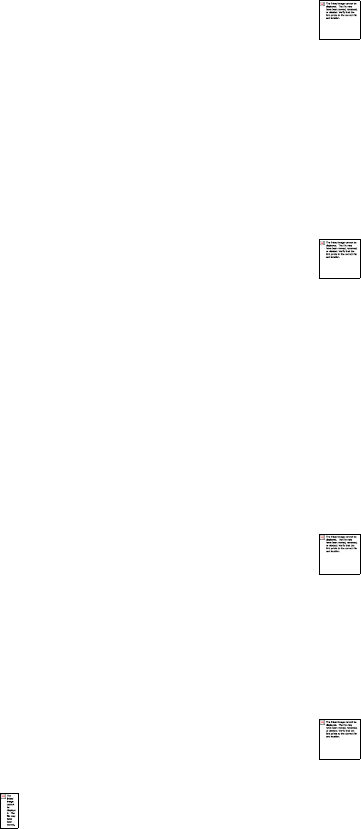
1. Press [button name] and choose “[menu choice]”. This puts the page into annotation
mode and displays [symbol name].
2. Use the controller to move the [symbol name] over the note's number.
3. The note appears [location].
4. Press the [key name] key to edit the note.
5. Use the keyboard to make your changes.
6. Navigate the controller over "[menu choice]" and press the controller.
To edit a note while viewing your notes and marks, follow these steps:
1. Press the [button name] button and select "[menu choice]".
2. Move the controller [direction] to select the note you want to edit.
3. Press the [key name] key to edit the note.
4. Use the keyboard to make your changes.
5. Navigate the controller over "[menu choice]" and press the controller.
To delete a note, follow these steps:
1. Press [button name] and choose “[menu choice]”. This puts the page into annotation
mode and displays [symbol name].
2. Use the controller to move the [symbol name] over the note's number.
3. The note appears [location].
4. Press the [key name] key to delete the note.
To delete a note while viewing your notes and marks, follow these steps:
1. Press the [button name] button and select "[menu choice]".
2. Move the controller down to select the note you want to delete.
3. Press the [key name] key to delete the note.
Tip: You can also view the notes and highlights you've created at [insert links].
Viewing Your Annotations
To view your bookmarks, highlights, and notes, press the [button name] button and select
"[menu choice]."

Each entry has a location number followed by the bookmark, highlighted passage, or note. Your
annotations are listed in the order that they occur in the content. There is no limit to the number
of annotations you can have. Use the [button names] buttons to turn the pages just as you would
in a book.
To go to a location, move the controller to select the bookmark, highlighted passage, or note and
press the controller to go there.
Your annotations are also stored in your "[feature name]" file for later reference. See below for
more information.
Using [feature name]
In addition to annotations, you can move [content] to the "[feature name]" file. The "[feature
name]" file contains all of the bookmarks, highlights, notes, and articles you have made or stored
across all your content. Later, you can view the file or copy it to your computer as a text file.
Once on your computer, you can edit it or send the [content] to someone else. Storing [content]
and highlighting are a great way to capture your favorite quotes and share with others.
To store [content]:
1. Go to the [content] that you want to store.
2. Press the [button name] button.
3. Move the controller until "[menu choice]" is underlined. Press the controller to select.
The Device adds [content] to the "[feature name]" file. You can review [content] later, search for
words or terms you stored, and transfer the "[feature name]" file to your computer.
To view your stored [content], press the [button name] button to display the [screen name].
Move the controller until "[menu choice]" is underlined. Press the controller to open it. While
viewing the file, you cannot navigate through to the materials referenced in the file.
More about [feature name]
You cannot edit the "[feature name]" file from within the Device, but you can edit the file on
your computer.
To edit the "[feature name]" file:
1. Connect your Device to your computer using the USB cable.
2. Your Device should appear on your computer in the same location you would normally
find an external USB drive.
3. Open your Device. You should see a folder entitled [folder name]. Transfer the "[feature
name]" file out of this folder.
4. Open the "[feature name]" file on your computer using an application that can read or
import a [format type] file.
5. Make the changes and save the edited file.
6. Transfer the "[feature name]" file back to the "[folder name]" folder on your Device.
7. Unmount your Device from your computer before removing the USB cable.
Changing your "[feature name]" file does not affect any notes, bookmarks, or highlights you've
made in the actual content. The next time you access the content, you can still use them for
navigation and reference.
To remove the "[feature name]" file from your Device:
1. Press the [button name] button and move the controller until "[menu choice]" is
underlined.
2. Move the controller [direction].
3. Press the controller to select "[menu choice]."
4. Press the controller to select "[menu choice]."
The Device adds a new "[feature name]" file the next time you add [option] or annotation to any
content.
The amount of text you can add to the "[feature name]" file from each item may be limited. The
"[feature name]" file will include a note informing you if a limit has been reached for a given
item.
3.6 Sharing Notes and Highlights
[Describe feature].

.
To share a new note, follow these steps:
1. While accessing [content], press [button name] and choose “[menu choice]”. In a PDF
document, press [button name] and choose “[menu choice]”. This puts the page into
annotation mode and displays [symbol name].
2. Move the [symbol name] to the location where you want to add your note.
3. Begin typing your note. Notes must be no longer than 100 characters.
4. Use the controller to highlight "[menu choice]" and press the controller.
To share a new highlight, follow these steps:
1. While accessing [content], press [button name] and choose “[menu choice]”. In a PDF
document, press [button name] and choose “[menu choice]”. This puts the page into
annotation mode and displays a [symbol name].
2. Move the [symbol name] to the location where you want to start highlighting.
3. Press the controller.
4. Use the controller to move the [symbol name] [direction] to where you want your
highlight to end.
5. Press the [key names] keys + .
6. (Optional) Type the message you want to share. Keep in mind that your message must be
no longer than 100 characters.
7. Move the controller down to highlight "[menu choice]" and press to select it.
To share a note or highlight that you've already created, follow these steps:
1. While accessing [content], press [button name] and select "[menu choice]".
2. Move the controller down to select the note or highlight that you want to share.
3. Press the [key names] keys + .
3.7 PDF Files
Your Device is able to display most PDF documents. (Note that password-protected PDF files
are not supported.)
When your Device is set to portrait orientation, PDF documents are displayed in their original
layout and fit the entire screen of the Device. White margins of PDF documents are
automatically cropped to maximize the amount of content shown on the screen.
In landscape orientation, the Device automatically magnifies your document to fit the width of
the screen to improve readability.

A black outline defines the limit of the page of the PDF document.
Zooming into PDF Files or Adjusting the Contrast
Pressing the [key name] key will let you choose zoom options or adjust the contrast of the
PDF document.
[menu choice] — displays the PDF by matching the width of the page to the width of your
Device's screen; this is the default (normal) size. Pressing the [button name] button while
zoomed in returns the view to normal size.
[menu choice] — displays the PDF contents at one and one half times the normal size.
[menu choice] — displays the PDF contents at twice the normal size.
[menu choice] — displays the PDF contents at three times the normal size.
[menu choice] — displays the PDF at 100% zoom as it would appear when printed.
After selecting a zoom option, a selection frame appears; you can move the frame using the
controller. To move the frame in small increments, hold down the [key name] key while
using the controller. Once the frame is over the area you wish to zoom into, select it by pressing
the controller.
Once you are zoomed in, you can use the controller to pan left, right, up and down within each
page. To pan in small increments, hold down the [key name] key while using the controller.
The black bars at the right and bottom of the display indicate which portion of the overall page
you are viewing. If you press the [button names] buttons, the page will change and the view will
remain zoomed in. Press the [button name] button to dismiss the zoomed-in view and return to
normal size.
[menu choice]— select a contrast option to increase or decrease the contrast of the PDF
document for easier viewing. The contrast option you choose remains in effect for the current
PDF document until you change it.
Using the [Menu Name] Menu
The options available while viewing a PDF file are slightly different than when using [content]
on the Device. Options that are not available in PDF files are dimmed in the menu.

[menu choice] — allows you to move to another location in the PDF document. Choose one of
these options:
[menu choice] — takes you to [location] of the [content].
[menu choice]— this option is not available for PDF documents.
[menu choice]— takes you to the beginning of the PDF file.
[menu choice] — type the number of the page you want to jump to and select this option. Press
the [key name] key to enter numbers.
[menu choice] — displays the search box at [location]. This allows you to search for a word or a
combination of words inside the currently opened PDF document. This feature doesn't work in
cases where a PDF document was created using image files.
[menu choice] — bookmarks the page you are currently on. After selecting this option, the
upper right corner of the PDF will be dog-eared and this menu option will change to "[menu
choice]"
[menu choice] — puts you into annotation mode on the current page and displays a [symbol
name]. Move the [symbol name] to a location on the page, then begin typing to create a note or
click to start a highlight. Press the [button name] button to cancel annotation mode. You can
save your notes and highlights and share them with friends. For more information, see “[menu
choice]”, “[menu choice]”, and “[menu choice]”.
[menu choice] — displays a page containing all of your current item's notes,
highlights, and bookmarks.
3.8 Listening to Audio Materials
There are three types of audio materials that you can listen to on your Device. You can listen to
[audio files], transfer MP3 files from your computer to play as background music while you
read, or turn on [feature name] in your material (where allowed). Due to their large file size,
[audio files] can only be delivered to your Device using Wi-Fi. Alternatively, you can purchase
and download [audio files] in the Device Store using your computer’s Internet connection and
then transfer them to your Device using USB. For information about transferring [audio files] or
MP3 files from your computer to your Device, see Chapter 8.
[Audio Files]
On your [screen name], your [audio files] list the [information], but they also have the word
"[insert]" next to the title to indicate that they are [audio files]. To listen to one of your [audio
files], select it from your [screen name]. You will see a page similar to the one shown below.
The Device provides a standard set of controls that are explained below.
[menu choice] — indicates how far you have come in the [audio file], the elapsed time, and the
section you are in.
[menu choice] — pauses or plays the [audio file] (there is no stop control).
[menu choice] — moves ahead [number] seconds from the current location.
[menu choice] — takes you back to the beginning of the [audio file].
[menu choice] — moves backwards in the [audio file] to the previous section.
[menu choice] — moves backwards [number] seconds from the current location.
[menu choice] — moves ahead to the next section in the [audio file].
Background Audio
To play background audio (MP3 files) that you have transferred to your Device, follow the steps
below:
1. If you are not already on the [screen name], press the [button name] button.
2. Press the [button name] button.
3. Move the controller until "[menu choice]" is underlined and press the controller to select
it.
4. Move the controller until "[menu choice]" is underlined and press down to select it.
The songs are played in order, by the date you added them to your Device. You can adjust the
volume of the music using the volume controls [location]. You can continue to listen to the audio
while accessing content; the background audio continues to play unless you open an [audio file],
turn on [feature name], all of the files have been played, or if you stop the playback as indicated
below.
To turn off background audio:
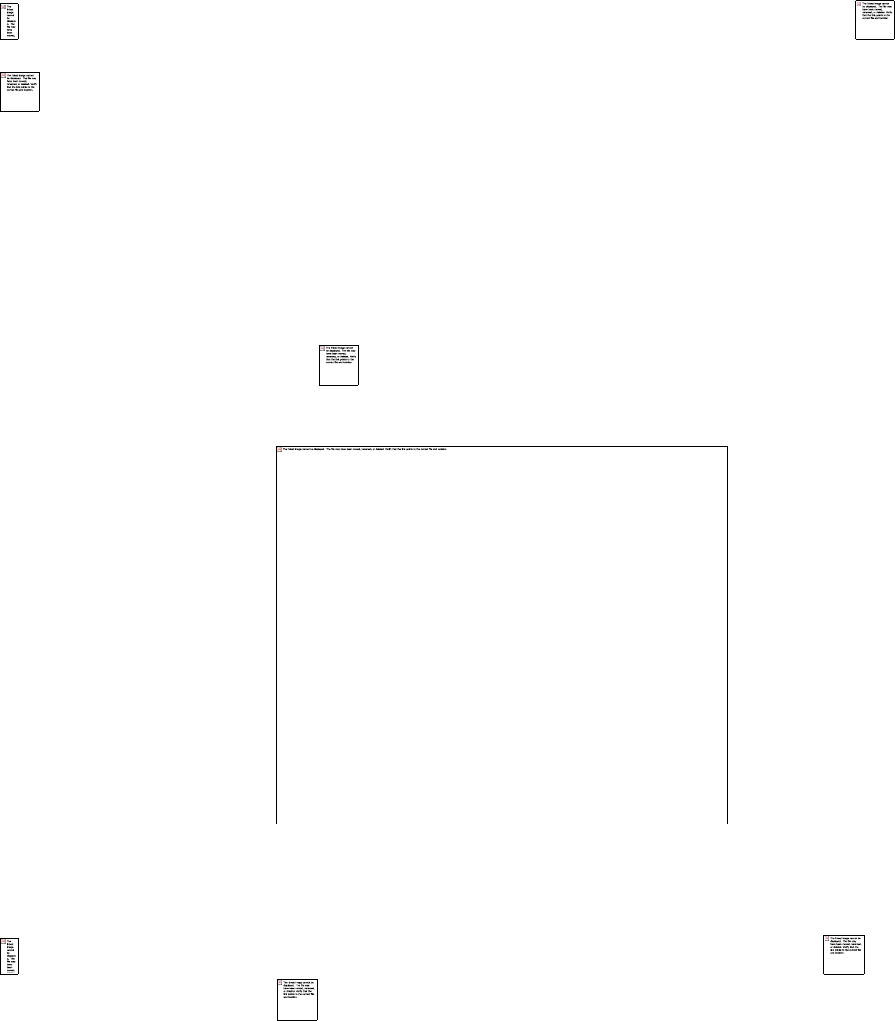
1. If you are not already on the [screen name], press the [button name] button.
2. Press the [button name] button.
3. Move the controller until "[menu choice]" is underlined. Press the controller to select.
4. Move the controller until "[menu choice]" is underlined. Press the controller to select.
Tip: You can also play or stop background audio by holding down the [key name] key and
pressing the [key name]. You can forward to the next track by holding down the [key name] key
and pressing the [key name] key.
[Feature name]
Your Device can [describe feature] [content](where allowed) with the Device application
[feature name].
To turn on [feature name], follow these steps:
1. Press the [key name] key .
2. Move the controller so that "[menu choice]" is underlined. Press the controller to select.
Tip: You can also play or stop [feature name] by holding down the [key name] key and
pressing the [key name] key . You can pause and resume [feature name] by pressing the
[key name]. [feature name] continues even if you put your Device to sleep. Sleeping your Device
allows [feature name] to continue but locks all of the keys and buttons so you don't inadvertently
press one.
* * *

CHAPTER 4
Searching on the Device
The Device allows you to take advantage of powerful search capabilities. You can search locally
on the Device or remotely at the Device Store, [Service Name], or the Web.
4.1 Introduction to Search
This section describes the types of searches that you can perform using the Device and how to
use search.
Types of Searches
The Device supports several types of search as summarized below.
Searching What You are Currently Accessing
You can limit a search to only what you are currently accessing. You enter your search term or
phrase and the Device searches in the body of the current item.
Searching All Your Content
You can alternatively search all the material on the Device. You enter your search term or phrase
and the Device searches in the body of the text, in the metadata, and in your "[feature name]"
file. For PDFs, the Device searches for the term in the metadata only. Additionally, the Device
also keeps and searches the metadata for the content you have stored on Company.
Searching Remotely
The Device can perform remote searches in several different locations using wireless. Each of
these remote location searches are described in the final section of this chapter.
Searching for Definitions
You can limit a search to the dictionary. The Device searches your default dictionary for
definitions of the word you have entered.
Performing a Search
To perform a search, follow these steps:
1. Type in your search term; the search line will automatically appear. You can use whole
words, and no distinction is made between lower and upper case.
2. To find the word or phrase in the content, move the controller to highlight "[menu
choice]." Or, to choose the type of search, continue moving the controller [direction].
You can search all your items, the Device Store, [Service Name], [Service Name], or the
dictionary.
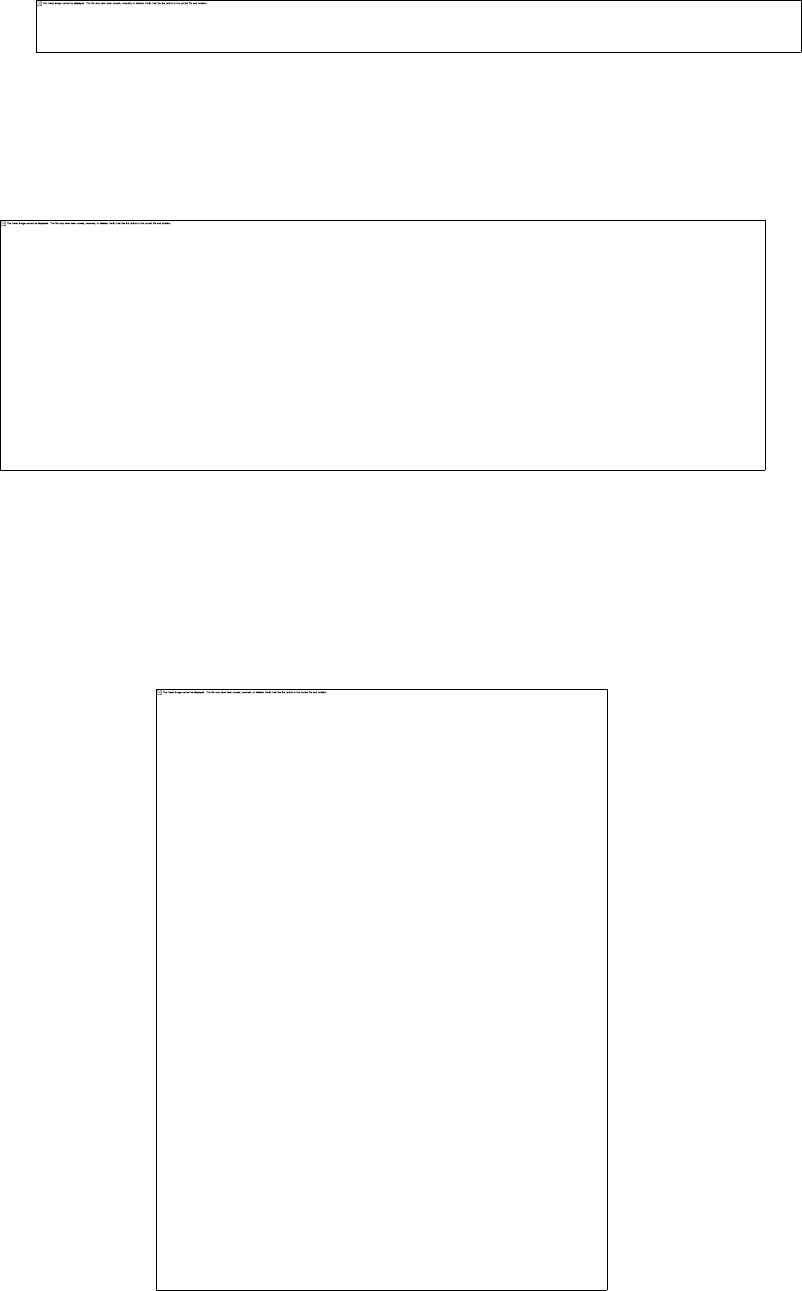
3. Press the controller to submit your search.
If you select "[menu choice]" from the [menu name] menu, the screen will display a full search
page.
4.2 Search Results Page
When searching all your content, the Device looks in the materials you have on your Device and
the metadata of the materials you have in [feature name]. This includes purchased items,
personal documents, and annotations that you have created.
The example below shows a typical search results page.

The screen shows [describe].
Use the [button names] buttons if there are more results than fit on the current page.
Search Results for a Specific Item
To see the results for one of the items listed:
1. Use the controller to underline the item.
2. Press the controller to view the matches.
3. A page appears showing [describe].
To go to a specific location in the content where the search term occurs, use the controller to
underline the location and press the controller to select. If the search results encompass multiple
pages, then use the [button names] buttons to navigate between pages.
To close the search results, move the controller to highlight "[menu choice]" and press the
controller.
Search Results for a Definition
When you want to look up the meaning of a word, you can limit a search to the dictionary. The
Device searches your default dictionary for definitions of the word you enter.

To find a definition, follow these steps:
1. Type in the word you want defined.
2. Move the controller to highlight "[menu choice]."
3. Press the controller to submit your search.
You will see [describe].
4.3 Performing Remote Searches
To search remotely, you must have the wireless switched on. You can select any of the remote
searches described in this section.
If the wireless is not already on, press the [button name] button. Move the controller to underline
"[menu choice]" and press the controller to select and turn on the wireless.
Searching [Service Name]
To search [Service Name], enter your term and move the controller to select "[Service Name]."
This opens a web browser and displays the [Service Name] page.
Searching the Web
To search the Web, enter your term and move the controller to select "[Service Name]." This
opens a web browser and submits your search term to [Service Name].
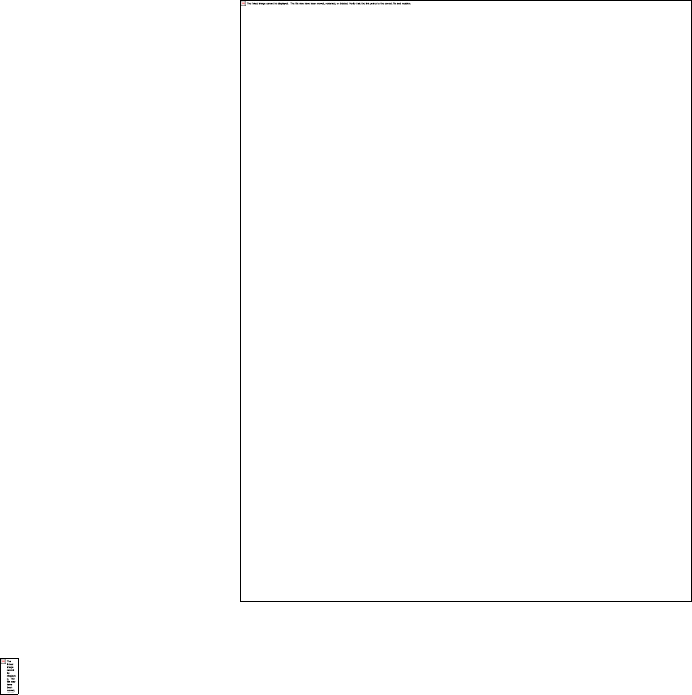
Searching the Device Store
To search the Device Store, enter your term and move the controller to select "[menu choice]."
Your Device connects to the Device Store and displays the search results page for the store
sorted by relevance, as shown in the example below. You can page through the results just like
you would do in the content on your Device.
You can narrow results by categories by clicking on the drop-down list located [location].
* * *

CHAPTER 5
The Device Store
The Device Store is the place to purchase your [content]. Find an item in the store, select "[menu
choice]," and you will receive your item wirelessly. Company automatically backs up all of your
purchases in case you lose your Device or want to download the [content] again. To help other
Company users decide what to buy, you can also add your own ratings and reviews.
5.1 Getting Started at the Store
This section tells you how to connect to the Device Store on your Device, and provides some
ideas about the best ways to look for content once you are connected.
Connecting to the Device Store
You connect to the Device Store using your Device's built-in wireless technology. To go to the
Device Store, follow these steps:
1. If wireless is not already on, press the [button name] button, move the controller up so
that "[menu choice]" is underlined, and then press the controller to turn on the wireless.
2. Press the [button name] button and move the controller down to underline "[menu
choice]."
3. Press the controller to select "[menu choice]."
You will see this icon in [location], if you are not already connected. The Device Storefront
will appear as shown later in this chapter and serves as a launch point for all of the Device Store
services.
5.2 The Device Store Pages
This section describes the different pages you will find at the Device Store, like the Device
Storefront, the browse pages, and the product detail pages for individual pieces of content.
Note: the Device Store pages can only be viewed in portrait mode.
The Device Storefront
When you select "[menu choice]" from any menu, you will be taken to the Device Storefront. An
example is shown below but the storefront you see may be different since we update it often.

[menu choice]— enter your search criteria here and Company will search the entire the Device
Store for matches and return the search results.
Once you are in the Device Store, you can move around using links on the pages of the store
such as [link name] or [link name], by using the [menu name] menu, or by searching the Device
Store for specific [content].
The Store Menu
The menu you see while you are connected to the Device Store allows you to go to other places
in the store easily and includes the selections listed below.

[menu choice] — turns the wireless connection off. If you turn wireless off, you will not be able
to access the Device Store.
[menu choice] — takes you to the Device Storefront.
[menu choice] — displays the [content] currently available in the Device Store.
[menu choice] — displays the [audio files] currently available in the Device Store.
[menu choice] — displays the [content] currently available in the Device Store.
[menu choice] — displays the [content] currently available in the Device Store.
[menu choice] — displays the [content] currently available in the Device Store.
[menu choice] — displays a list of best sellers.
[menu choice ] — displays a list of new or noteworthy content on the Device Store.
[menu choice] — displays items recommended for you by Company based on your previous
purchases.

[menu choice] — displays the Device items in your wish list that you may want to buy later.
Browsing the Store
Another way to find material in the Device Store is to browse through the different content
categories. Once inside a category, you can further refine your browse by topic. For example,
within "[menu choice]," you can refine listings to "[menu choice]," "[menu choice]," "[menu
choice]," etc. Each browse page shows the path that you have taken at the top so you can easily
retrace your steps.
Browse Listings Sample
The example below shows you the type of listings you will see on the [menu choice] browse
page.
[menu choice] — shows the steps on the path you used to get to the current page.
[menu choice] — shows the number of items available in the particular category.
[menu choice] — groups the content by topics of interest to make browsing easier. Select the
category you are interested in to show only items in that particular subject. You can also select
subcategories within the main category by selecting "[menu choice]" at [location].
Getting the Details

The product detail page for [content] provides the most pertinent information about an item. To
get to the product detail page for a particular item, use the controller to select it.
Product Detail Page Example
The example below shows you a product detail page for [content] available at the Device Store.
The features on this page are explained in the list below.
[menu choice] — searches the Device Store for other [content] by [criteria] when selected.
[menu choice] — describes the item. Select "[menu choice]" to see the full text.
[menu choice] — purchases the item and sends it wirelessly to your Device.
[menu choice] — displays the customer reviews for this item. Provides links to editorial reviews
and for writing your own review.
[menu choice] — downloads the beginning of the [content] for free so you can sample it before
buying.
[menu choice] — [describe feature].
[menu choice] — indicates whether [feature name] is allowable by the [content]'s rights holder.
[menu choice]: — displays a list of items purchased by Company customers who also bought
this item.
Additional Details for [Audio Files]
You can purchase [audio files] in the Device Store using a 3G connection but [audio files] can
only be downloaded to your Device using a Wi-Fi connection. If Wi-Fi is not available at your
current location, your [audio file] purchase is automatically downloaded to your Device the next
time your Device connects using Wi-Fi. Alternatively, you can download your [audio file]
purchase from Company to your computer and then transfer it to your Device using USB. See
“[Audio Files] and MP3s” in Chapter 8 for information on transferring [audio files] using USB.
The product detail page for [audio files] is similar to the product detail page for [content], but it
contains different purchasing options:
[menu choice]: lets you purchase the [audio file] without becoming a member.
[menu choice]: lets you buy the [audio file] at a discounted price, as part of a special offer to join
a membership monthly plan. This special offer entitles you to [number] free [audio files] as part
of your membership.
[menu choice and description]
Additional Details for [Content]
The product detail page for [content] is similar to the product detail page for [content], but it
contains different purchasing options:
[menu choice]— select this to start your subscription. All [content] come with a free trial to start
your subscription, and you can cancel your subscription on the [page name] page on Company
website at any time during this period. After the trial period, your subscription will automatically
be delivered at the regular monthly price.
[menu choice]— purchases the current issue of the [content] and sends it to your Device.
Note that if you have already subscribed to or purchased an item, you will see the word "[word]"
next to the [content] on the product detail page.
Adding Items to Your Wish List
The Device Store lets you add items to [location] that you want to look at or purchase later. To
add an item to [location], select "[menu choice]" from the product detail page for the item.
To see [location], select "[menu choice]" from the [menu name] menu. To remove the item from
[location], select "[menu choice]" for that item.

5.3 Recommendations, Reviews, and Ratings
The Device Store provides several features to help you decide which materials you may want to
purchase. This section describes the various ways you can find what is available.
Recommendations
The [page name] page provides a list of things that you might enjoy based on the types of
materials you have purchased in the past either on the Device or from the Company. To get to
this page, select "[menu choice]" from the Device Storefront or from the Device Store menu.
Looking Up Reviews
The [page name] page lists customer reviews for items. To get to the [page name] page for a
specific item, select "[menu choice]" from the product detail page for that item.
To see editorial reviews from publications, select "[menu choice]" from the [page name] page.
For the complete text of a particular review, select the review excerpt using the controller.
Writing Your Own Ratings and Reviews
You can share your opinions with other customers by rating and reviewing the materials. To get
to this page, select "[menu choice]" from the product detail page for the item you want to
critique, and then select "[menu choice]."

The sample screen below shows you the type of information you can enter.
Entering a Rating and Review
1. Indicate the rating you think this item deserves by [describe].
2. Select "[menu choice]" and enter [information] for your review. Select "[menu choice]"
to submit your [information].
3. Select "[menu choice]" and type your review on the lines provided. Select "[menu
choice]."
4. To submit your rating and review, select "[menu choice]." If you want to close this page
without submitting your rating or review, select "[menu choice]."
5.4 Making Purchases
This section explains various aspects of purchasing items from the Device Store.
Trying a Sample
Most [content] allow you to download a sample before you decide to buy the item. The end of
the sample has a link to revisit the product detail page for the item or a link to purchase the item
directly. In addition, while reading a sample, the menu shows "[menu choice]" so you can
purchase the item at any time during your reading.
Buying Your Selections

To make your purchase, select "[menu choice]" from any product detail page for the item you
want. Your item will be auto-delivered wirelessly to your Device and also added to the [page
name] page on the Company website. You will see an "[message name]" message at [location]
Tip: While one or more items are in the process of being downloaded from the Device Store to
your Device, you can monitor the download progress. From [screen name], press [button name]
and select “[menu choice]” to display a list of the items that are in the process of downloading
and their download progress. (If this option is dimmed, then downloading is complete.)
Once downloading is complete, items automatically appear in [screen name]. If the download is
not successful, or if it is interrupted, the Device will attempt to download again without any
action required from you.
Tip: Once your item has been downloaded, the original is retained in the [page name] page on
the Company website.
Returning an Item
All of your Device Store purchases present an order cancellation feature at the time of purchase
in case you change your mind or made a mistake. Just select "[menu choice]" on the order
confirmation page. You can also contact Device Support using Company's service on the Web at:
[URLs]
For US and International customers, Device Support can be reached via e-mail at [insert email
address] or by phone at [insert number] (charges will apply).
U.S. customers can reach Device Support by phone at [insert number].
UK customers can contact the Device Support at [insert email address] or by phone at: [insert
number] or outside the UK: [insert number] (charges will apply).
* * *
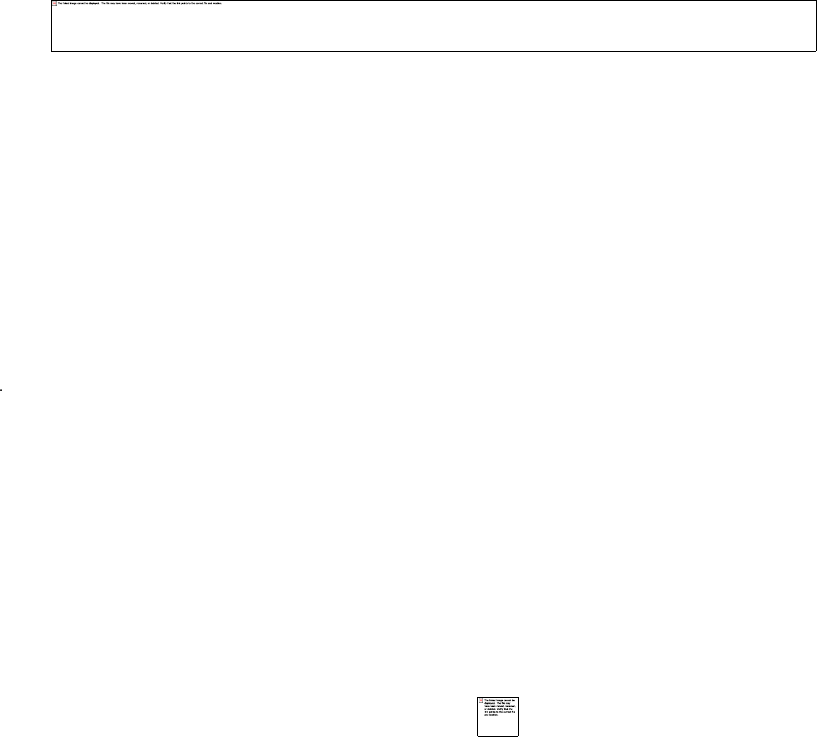
CHAPTER 6
Accessing the Web
Your Device comes with an application called [name], which is a standard web browser that’s
similar to other web browsers you may have used on a computer or other Device.
6.1 Using the Web Browser
There are four ways to open the web browser. The two main ways are to select "[menu choice]"
from the [screen name] screen or to follow a link from within your material. Many of the
[content] that you subscribe to from the Device Store have links to Web sites. Selecting these
links will open the web browser and take you to the URL associated with the link. If you select
"[menu choice]" from the [page name] page, you will open to the last Web site you were viewing
in your browser.
One other way of accessing the web browser is to type in a word anytime from [screen name] or
any [content]. When you begin typing, a search box will pop up at [location], and you can use
the controller to select "[Service Name]" or "[Service Name]" from the menu to search those
sites directly for the word you typed.
You can also enter a URL in the search bubble from the [screen name]. Type the URL and use
the controller to select "[menu choice]" and then press the controller.
Entering a URL
To enter the URL for a Web site, navigate to the top of the screen to select the URL text field or
press [button name] and select "[menu choice]". Begin typing a URL. When you are done typing,
use the controller to select “[menu choice]” and press the controller to go to that Web site.
The URL text field retains the last URL you entered in case you want to quickly edit the same
address and submit it again.
To the right of the URL text field there is a button to stop loading or reload the current page.
From there, use the controller to select the [Service Name] search engine or [Service Name] if
you want to search one of those sites for the text you entered in the URL text field. To the left of
the URL text field are shortcuts to navigate back and forward one page.
Tip: To reload a web page, press the [key name] key .

Using Bookmarks and Adding Your Own
Bookmarks let you easily access a Web page without needing to type the address every time.
When you open the web browser from the [page name] page for the first time, you will see a list
of default bookmarks with links to information such as daily news and weather. While browsing,
you can also access the same list of bookmarks by selecting "[menu choice]" from the [menu
name] menu (just press the [button name] button).
To add a Web site to the [page name] page, simply navigate to the site that you want to
bookmark and press the [button name] button. Move the [symbol name] to "[menu choice]" and
press the controller. Any new bookmarks will be added to the existing list on your Device.
You can remove a bookmark by going to your Bookmarks lists and using the controller to
underline the bookmark that you want to delete. Move the controller left to display "[menu
choice]." Press the controller and the site will be deleted from your Bookmarks. From the
Bookmarks list, moving the controller to the [direction] lets you edit the name of the bookmark.
Using [Buttons]
Most Web pages you find on the Internet will have more content than can be displayed on your
screen. Use the [button names] buttons to scroll [direction] to see more of the current web page.
This is equivalent to using your mouse on a computer to move down or up in a Web page. You
can also move around the page using the controller.
Selecting Links, Buttons, and Boxes
You can navigate the links on a Web page by using the controller to move the [symbol name]
around the page. Links in web browser appear [describe]. Below is a Web page with multiple
selectable links.
Using the controller, position the [symbol name] over a link, so that it changes to a [icon name]
icon , then press the controller to select that link. The browser will open that page.
If you want to enter information in an input field in a Web page, for example to search that site,
move the [symbol name] to that input field and begin typing. When you finish typing, select the
nearby [button name] button to retrieve the results. If there are radio buttons embedded within a
Web page, you can choose one by moving the [symbol name] to the button you want to change
and pressing the controller to "select" this button.
Zooming into Web Pages
When the web browser first displays a web page, it provides a selection frame on top of the web
page with an image of [image description] .
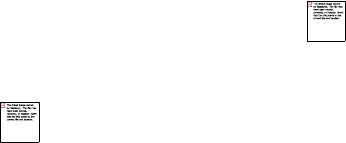
Follow these steps to zoom in:
1. Use the controller to position the selection frame over the area that you want to magnify.
2. Press the controller to zoom into the web page.
3. To see more zoom options, press the [key name] key or press [button name].
Pressing the [key name] key will let you choose zoom options for a Web page. (These zoom
options are the same as using [menu choices] on the [menu name] menu.
[menu choice] — displays the Web page by matching the width of the page to the width of your
Device's screen; this is the default (normal) size. Pressing the [button name] button while
zoomed in returns the view to normal size.
[menu choice] — displays the Web page at one and one half times the normal size.
[menu choice] — displays the Web page at twice the normal size.
[menu choice] — displays the Web page at three times the normal size.
[menu choice] — displays the Web page at 100% zoom as it would appear if printed.
Once you are zoomed in, you can use the [button names] buttons to move up or down within the
Web page. You can also use the controller to move left, right, up and down within the Web page.
The black bars at the right and bottom of the display indicate which portion of the overall page
you are viewing. Press the [button name] button to return the view to the normal size.
Optimizing the Web Browser
While using the web browser, you can switch to [feature name] to eliminate everything from the
Web page you’re reading except the text and photos. [feature name] makes reading articles more
enjoyable by removing the clutter around what you’re reading.
To switch to [feature name], follow these steps:
1. While viewing articles on a web page, press [button name].
2. Choose “[menu choice]”. The view switches to display only the text and photos of the
articles.
3. Use the [button names] buttons to scroll up or down on the page.
4. To return to the standard web browser view, press [button name] and choose “[menu
choice]”.
Using History
You can easily return to Web sites you recently viewed by pressing the [button name] button and
selecting "[menu choice]." You will then see a list of recently visited Web sites to select from.
You can add a site to your Bookmarks by moving the controller to the right and choosing “[menu
choice]”.
The Web Browser Menu
The web browser menu contains other items you can select, many of which also appear in the
Browser's navigation bar. To view the menu, press the [button name] button while viewing the
web browser
[menu choice] — turns the wireless connection off. If you turn the wireless off, you will not be
able to use the browser.
[menu choice] — takes you to the Device Storefront.
[menu choice] — takes you directly to the URL field where you can enter a web address to visit.
[menu choice] — magnifies the web page view. Choose this menu item again (up to three times)
to magnify the view up to three times the normal size. Once you are zoomed in, you can use the
controller to pan left, right, up, and down to see different parts of the page. You can also use the
[button names] buttons to pan up or down while zoomed in. The black bars on the right side and
bottom of the page indicates which portion of the overall page you are viewing.
[menu choice] — zooms out the Web page view. Choose this menu item again (up to three
times) to return the view to normal size
[menu choice] — [menu choice] eliminates everything from the Web page you’re reading except
the text and photos. When you’re using [menu choice], this menu item changes to “[menu
choice]”. Choose “[menu choice]” to return to the standard web browser page view.
[menu choice] — displays your list of Web bookmarks.
[menu choice] — adds the current page to the bottom of your list of bookmarks.
[menu choice] — displays your [page name] page, which keeps track of the sites you have
visited.
[menu choice] — displays your list of settings where you can change the options for the web
browser.
6.2 Other Features
As you become more familiar with the web browser, the following topics may be of interest to
you.
Downloading Files
Some Web sites may have [content] or documents you can download to your Device. When you
select these [content] or documents using the web browser, you will be asked to confirm if you
want to download these to your Device.
Web Browser Settings
You can modify the default browser behaviors and perform simple maintenance procedures
using web browser settings. To display the [screen name] screen, press the [button name] button
while in the browser and then use the controller to select "[menu choice]."
[menu choice] — removes cached Internet address entries from your Device. Move the on-screen
highlight to "[menu choice]" and press the controller to clear this list.
[menu choice] — removes cookies from your Device. Move the on-screen highlight to "[menu
choice]" and press the controller to remove the cookies.
[menu choice] — enables or disables Javascript to be executed on the pages you visit. Note that
if Javascript is disabled, Web pages will load faster.
[menu choice] — select whether you want images to appear when you load a Web page. Note
that if you do not show images, Web pages will load faster.
* * *
CHAPTER 7
[Feature Name]
Use the [page name] page to set up a Wi-Fi network, create a Device password, enable [feature
name], link to your [feature name], and set other Device preferences. The [page name] page
contains a number of prototype features that you may find useful.
7.1 Adjusting Your Device Settings
The [page name] page is shown below and the features are explained in the list that follows. To
go to the [page name] page, press the [button name] button while on the [screen name]. Use the
controller to underline "[menu choice]" and press to select. Use the [button names] buttons to see
all the settings.
[menu choice] — this is the Company account name to which your Device is registered. All
Device Store and other charges will be applied to the credit card associated with your account.
[menu choice] — Displays the number of available (detected) Wi-Fi networks, and shows the
name of the Wi-Fi network you are currently connected to. If you are not connected to a Wi-Fi
network, the “[menu choice]” field displays “[message]”. Select “[menu choice]” to view
detected Wi-Fi networks or set up a new Wi-Fi network.
[menu choice] — lets you personalize your Device by giving it a name. This name shows at the
top of the [screen name].
[menu choice] — [describe menu choice]
[menu choice] — displays the Wi-Fi MAC Address and the serial number of your Device. The
Wi-Fi MAC address uniquely identifies your Device when it connects to a Wi-Fi network. For
enhanced security, a Wi-Fi network may save a list of MAC addresses for the Devices that are
allowed to connect to that network. Before you can connect to such a Wi-Fi network, you may be
asked to provide your Wi-Fi MAC address so that it can be included in the list of allowed MAC
addresses for that network.
[menu choice] — Lets you navigate your Device while the Device [describe functionality].
[Menu choice] makes the Device easier to use, especially if you have vision difficulties.
[menu choice] — Secure your Device and restrict access to your content by setting a password.
If you set a password, you will be prompted to enter it when you turn your Device on or wake it
from sleep. If your Device is sleeping when you attach it to a computer using the USB cable, you
will also be prompted to enter your password in order to mount your Device on your computer.

[menu choice] — Lets you set the current local time on your Device so that you receive your
subscriptions promptly and to ensure the proper operation of some interactive content.
[menu choice] — allows you to turn on or off the automatic backup of your annotations. Disable
this feature if you do not want your annotations backed up or shared
[feature name] — allows you to [describe functionality].
[menu choice] — allows you to share your notes and highlights with others.
[menu choice] — enter your contact information here such as an address or phone number, in
case you lose your Device. Press the [key name] key to enter numbers or characters not present
on the Device keyboard.
Registering or Deregistering the Device
Your Device needs to be registered with your Company account information to use many of the
Device features such as purchasing content. If your Device is lost or transferred to another user,
you should deregister your Device from your account. The process to register or deregister is
described below. You can also register or deregister your Device on the [page name] page on:
[URLs]
Registering Your Device
If your Device is not already registered, follow these steps:
1. If you are not already on the [screen name], press the [button name] button.
2. Press the [button name] button. Make sure that wireless is turned on.
3. Move the controller until "[menu choice]" is underlined and press to select.
4. Press the controller to select "[menu choice]."
5. You will see a [describe] to enter your Company user name and password (the e-mail
address and password associated with your Company account). Use the keyboard to enter
in your information.
6. Navigate the controller to select "[menu choice]" to finish the registration process or
"[menu choice]" to cancel your registration.
Tip: If your Company user name or password contains characters not present on the Device
keyboard, press the [key name] key on the keyboard to see a menu of additional characters
and select the character you require.
Once registered, you can make purchases on the Device Store, convert personal documents, use
the web browser, and take advantage of other Company-sponsored services. If your Device has
incorrect registration information, deregister the Device and then reregister it.
Deregistering Your Device
If you want to transfer ownership of your Device or return it for service or recycling, you should
deregister it to prevent unauthorized purchases. The process is similar to the registration process
described above. Just select "[menu choice]" from the [menu choice] section and select "[menu
choice]" to confirm. Note that you will not be able to buy or download samples from the store, or
use the web browser if your Device is not registered.
You can also deregister your Device from the [page name] page on the Company website.
Wi-Fi Network Settings. Wi-Fi Network settings determine whether the Device uses a Wi-Fi
network to connect to the wireless. If no Wi-Fi networks are available, or if you turn wireless off,
then the Device connects to the wireless using 3G, if available.
To join a Wi-Fi network: select “[menu choice]” next to “[menu choice]” to display a list of
detected networks, and select “[menu choice]”. If necessary, enter a password, and click “[menu
choice]”. Once you join a Wi-Fi network, the Device automatically joins it whenever the
network is in range. If more than one previous network is in range, the Device joins the one most
recently used.
To join a Wi-Fi network that isn’t shown in the list of networks: select “[menu choice]”. Enter
the network name and password (if required), and select “[menu choice]”. Press the [key name]
key to enter numbers or characters not present on the Device keyboard.
When the Device joins a Wi-Fi network, the [icon name] icon at [location] <<show image>>
shows signal strength. The more bars you see, the stronger the signal.
If you manage a Wi-Fi network and know the network information, or if you were not able to
connect to a new Wi-Fi network that you tried to add, you can manually enter the network
information so that the Device can try to connect to the new Wi-Fi network.
To enter network information, follow these steps:
1. Make sure you are within range of the network you want to add.
2. Press the [button name] button, then press the [button name] button.
3. Navigate to “[menu choice]” by moving the controller [direction], then press the
controller to select.
4. Select “[menu choice]” next to “[menu choice]” to display a list of detected Wi-Fi
networks.
5. Move the controller to “[menu choice]” and press to select.
6. Choose “[menu choice]” to display the [screen name] screen.

7. Enter the name of the network that you want to add.
8. Choose the connection type. The Device can connect to Wi-Fi networks that use either
the DHCP (Dynamic Host Configuration Protocol) or the Static protocol.
9. If you chose the Static connection type, enter the network’s IP Address, Subnet Mask,
Router address, and DNS. Otherwise, you can skip this step. Press the [key name] key to
enter numbers or characters not present on the Device keyboard.
10. Enter the network’s security type.
11. Enter the password used to access this network.
12. Choose “[menu choice]”. The Device connects to the new network.
Personalizing Your Device
Your Device acquires a default name when it is first registered. This name is based on your
Company account name, and is displayed at [location] of the [screen name]. Before you edit this
name on your Device, make sure that wireless is turned on.
If you want to edit this name from your Device, follow these steps:
1. If you are not already on the [screen name], press the [button name] button.
2. Press the [button name] button.
3. Move the controller until "[menu choice]" is underlined and press to select.
4. Press [button name] to navigate to the "[menu choice]" setting, underline "[menu
choice]", and press to select.
5. Use the keyboard to change the Device name.
6. When you have finished, move the controller to highlight "[menu choice]" and press the
controller to submit the change.
Tip: To add any personal information such as your contact information, navigate with the
controller so that "[menu choice]" next to [menu choice] is underlined then press the controller.
Use the keyboard to add your information, then select "[menu choice]" when you have finished.
Using [feature name]
[Feature name] lets you navigate your Device while the Device [describe functionality].
To turn [feature name] on or off, follow these steps:
1. If you are not already on the [screen name], press the [button name] button.
2. Press the [button name] button.
3. Move the controller to underline "[menu choice]" and press to select.
4. Press [button name] to go to [location] of [location].

5. Move the controller to underline "[menu choice]" or “[menu choice]” next to the "[menu
choice]" setting and press to select.
Password - Protecting Your Device
To prevent others from using your Device or seeing your content, you can create a password that
must be entered whenever your Device starts or wakes from sleep. If your Device is sleeping
when you attach it to a computer using the USB cable, you will also be prompted to enter your
password before you can mount your Device on your computer.
If you forget your password, you must call Customer Service for help with resetting your Device.
Keep in mind that when you reset your Device, you will lose any [content], MP3 files, and
[audio file] files that you have not backed up.
To create a password for your Device, follow these steps:
1. If you are not already on the [screen name], press the [button name] button.
2. Press the [button name] button.
3. Move the controller to underline "[menu choice]" and press to select.
4. Press [button name] to go to [location] of [location].
5. Move the controller to underline "[menu choice]" next to the "[menu choice]" setting and
press to select.
6. Type in the password you want. The maximum password length is [number] characters.
7. Move the controller [direction] and type in your password again to confirm.
8. Move the controller [direction] and type in a hint. This hint can be displayed on the
password entry screen to help you remember your password.
9. Move the controller [direction] and select "[menu choice]".
To enter your password, follow these steps:
1. When you power on your Device or wake it from sleep, you will be prompted to enter the
password. If your Device is sleeping when you attach it to a computer using the USB
cable, you will also be prompted to enter your password.
2. Type in your password and press the [key name] key to submit it.
To change your password, follow these steps:
1. If you are not already on the [screen name], press the [button name] button.
2. Press the [button name] button.
3. Move the controller to underline "[menu choice]" and press to select.
4. Press [button name] to go to [location] of [location].
5. Move the controller to underline "[menu choice]" next to the "[menu choice]" setting and
press to select.
6. Enter your old password, and select "[menu choice]".
7. Type the new password. The maximum password length is [number] characters.
8. Move the controller [direction] and type in your new password again to confirm.
9. Move the controller [direction] and type in a hint. This hint can be displayed on the
password entry screen to help you remember your password.
10. Move the controller [direction] and select "[menu choice]".
To turn off password protection, follow these steps:
1. If you are not already on the [screen name], press the [button name] button.
2. Press the [button name] button.
3. Move the controller to underline "[menu choice]" and press to select.
4. Press [button name] to go to [location] of [location].
5. Move the controller to underline "[menu choice]" next to the "[menu choice]" setting and
press to select.
6. Enter your password, and select "[menu choice]".
Setting the Time
You can set the local time on your Device to enable prompt delivery of [content] and to ensure
proper operation of interactive content. Pressing [button name] from any the Device screen will
display the current time at the top of the screen.
To set the Device time initially, follow these steps:
1. If you are not already on the [screen name], press the [button name] button.
2. Press the [button name] button.
3. Move the controller to underline "[menu choice]" and press to select.
4. Press [button name] to go to [location] of [location].
5. Move the controller to underline "[menu choice]" next to the "[menu choice]" setting and
press to select.
6. Press the [button name] to adjust the hour.
7. Press the [button name] to advance to the minutes.
8. Repeat steps 6 and 7 to set the minutes and am or pm.
9. Use the controller to choose “[menu choice]” and press to select. Your Device is now
updated with the local time that you set.
To change the Device time later on, return to the [location] setting and choose “[menu choice]”.
You can have the Device automatically set the Device time to the correct local time by choosing
“[menu choice]".
Changing [Feature]
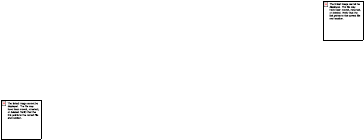
[Describe feature].
You can enable or disable [feature name] by following the steps below:
1. If you are not already on the [screen name], press the [button name] button.
2. Press the [button name] button.
3. Move the controller to underline "[menu choice]" and press to select.
4. Press [button name] to go to [location] of [location].
5. Move the controller to underline "[menu choice]" and press to select.
[Feature name] Settings
By default, [feature name] are displayed in your [content], but you can turn them off if you don't
want to see them. For more information on using [feature name], see Chapter 3.
To turn [feature name] on or off:
1. If you are not already on the [screen name], press the [button name] button.
2. Press the [button name] button.
3. Move the controller until "[menu choice]" is underlined and press to select.
4. Press [button name] to go to [location] of [location].
5. Move the controller to underline "[menu choice]" or "[menu choice]" next to the "[menu
choice]" setting and press to select.
[Feature Name]
[Describe feature].
To use this feature, follow these steps:
1. If you are not already on the [screen name], press the [button name] button.
2. Press the [button name] button.
3. Move the controller until "[menu choice]" is underlined and press to select it.
4. Press [button name] to go to [location] of [location].
5. Move the controller to underline "[menu choice]" next to the "[menu choice]" setting and
press to select. The "[screen name]" appears.
6. To link your Device to [service name], select "[menu choice]".
7. Move the controller down to highlight "[menu choice]" and type your [service name] user
name or e-mail address. To enter a capital letter, press the [key name] key down and
then press the letter.
8. Move the controller down to highlight "[menu choice]" and type your password. To enter
a capital letter, press the [key name] key down and then press the letter.
9. Move the controller down to highlight "[menu choice]" and press to select it.

10. If this is the first time you are linking a Device to [service name], select "[menu choice]"
to confirm that you want to allow your Device to access [service name].
11. You will return to the "[screen name]" screen, where your [service name] user name is
now displayed. Your Device is now linked to your [service name] account.
Your Device remains linked to a [service name] until you unlink it. To unlink your Device from
a [service name], follow these steps:
1. If you are not already on the [screen name], press the [button name] button.
2. Press the [button name] button.
3. Move the controller until "[menu choice]" is underlined and press to select it.
4. Press [button name] to go to [location] of [location].
5. Move the controller to underline "[menu choice]" next to the "[menu choice]" setting and
press to select it. The "[screen name]" appears.
6. Move the controller to highlight "[menu choice]" for the [service name] and press to
select it.
The [Menu Name] Menu
The [menu name] menu allows you to go to other places on your Device as well as update your
software or restart your Device. These menu options are defined below. To display the [menu
name] menu, press the [button name] button while you are on the [screen name].
[menu choice] — turns off wireless. When wireless is off, this option will change to [menu
choice].
[menu choice] — takes you to the storefront of the Device Store.
[menu choice] — change the dictionary you are using for the built-in [feature name] function.
This menu option is only present if you have at least one additional dictionary on your Device
besides the default dictionary.
[menu choice] — installs the latest software for your Device. When an update is loaded on your
Device, this menu option becomes available, otherwise it is dimmed.
[menu choice] — restarts your Device.
[menu choice] — resets your Device to its original factory settings and restarts your Device. You
should only select this action if instructed to do so by Customer Service. Before you reset your
Device to factory defaults, you must back up any [content], MP3, and [audio file] files. Once
your Device restarts, you must create a new Device password if you want to continue to
password-protect your Device.
[menu choice] — provides trademark, copyright, and other notices about the software installed
on your Device.
[menu choice] — connects to the Company website to download any newly available items and
[describe functionality].
Choosing Your Primary Dictionary
You can choose the dictionary you want to use when you look up words. The default is included
on your Device, but you can change your dictionary choice by purchasing a supported dictionary
on the Device Store and then following these steps:
1. If you are not already on the [screen name], press the [button name] button.
2. Press the [button name] button.
3. Move the controller to underline "[menu choice]" and press to select.
4. Press the [button name] button.
5. Move the controller to underline "[menu choice]" and press to select. Note that this menu
item only appears if you have more than one supported dictionary on your Device.
6. Move the controller to underline the dictionary you want to use and press to select.
7.2 [Feature Name]
The [feature name] page is a place for you to try out and experiment with some of the concepts
we have under development. We encourage you to send us your feedback to help us decide how
to improve the concepts and whether or not you think we should make them part of the Device.
To open [feature name], follow the steps below.
1. If you are not already on the [screen name], press the [button name] button.
2. Press the [button name] button.
3. Move the controller until "[menu choice]" is underlined and press the controller to select.
4. Select the concept you would like to try.
To give us feedback on items on the [page name] page, send an e-mail to:
[insert email address] (US customers)
[insert email address] (UK customers)
We are really interested in hearing what you have to say, so type as much as you want. Based on
your feedback, we may add or remove content from the [page name] page, so let your thoughts
be known.
7.2 Device Shortcuts
Global Shortcuts
Take a screen capture: [command name]
While typing, display extended [key name] picker: [command name]
[Screen Name] Shortcuts
If your [screen name] is sorted alphabetically by either [options], press a letter key and then press
the controller to go to the first item starting with that letter.
Reset [symbol name] to top or bottom of screen: [command name]
Type a word, then press [key name], to search for that word in all your [content].
When searching, delete all characters in the [menu choice] box: [command name]
Launch [game name] game: [command name]
Using Shortcuts
To share a highlight: [command name]

Add or remove a bookmark: [command name]
Press controller up or down to enable annotation mode on the current page and display a [symbol
name]. Move the [symbol name] to a location on the page, then begin typing to create a note or
click to start a highlight.
To go to the beginning of the [location], press the controller [directions].
PDF Shortcuts
To nudge the frame when a document is zoomed, or when panning a zoomed document: Hold
down the [key name] key while using the controller to nudge [directions].
Browser Shortcuts
To reload a web page, press the [key name] key .
To go back in your browsing history, press [button name].
Audio Shortcuts
[feature name]: [command name] to [options] and [key name] to [options].
Play MP3: [command name] to [options]. Press [key name] to [option].
* * *
CHAPTER 8
The Device and Your Computer
The Device uses wireless technology to deliver [content] (via Wi-Fi delivery only) to your
Device without the need for a computer. However, some the Device content, such as MP3 files,
must first be downloaded to your computer and then transferred to your Device using USB. In
addition, if Wi-Fi is not available at your location, you can download your [audio file] purchases
using your computer’s Internet connection, and then transfer them to your Device using USB. In
addition, there are other tasks you can accomplish using your computer as described in this
chapter.
8.1 Getting Started
This section lists the requirements for connecting the Device to your computer.
System Requirements
Both Macintosh and Windows users can manage the Device files through the USB connection.
When your Device is plugged into your computer, your Device will appear as a removable mass
storage the Device. If your computer is Windows-based, you need to be using Windows 2000 or
later. If your computer is a Macintosh, you should be using Mac OS X 10.2 or later. With either
computer, you must have an available USB port or an attached USB hub with an available port.
Making the Connection
To connect the Device to your computer, follow these steps:
1. Plug the larger end of the USB cable into an available USB port or a powered USB hub
connected to your computer.
2. Connect the other end of the USB cable to the micro-USB port [location].
The illustration below shows a Device and a laptop computer connected through the USB cable.

When you are connected to your PC, your Device will go into USB drive mode and its battery
will be recharged by the computer. Your wireless is temporarily shut off and you will not receive
any of your subscriptions while in this mode. Also, your Device is not usable [in several
respects] while you are in USB drive mode, but will return right to where you were when you
eject the Device from your computer.
To eject the Device from your computer, follow these steps:
Windows Vista and 7: Click on the [button name] button, select "[menu choice]" from
the options, right-click on the [icon name] icon and select "[menu choice]" from the pop-
up menu.
Windows XP: Right-click on the "[icon name]" icon in the [location] of the task bar and
follow the on-screen instructions to remove the Device.
Mac OS: [menu choice] on the [icon name] icon and choose "[menu choice]."
Tip: If you'd like to continue using your Device while its battery is being charged by the
computer, you will need to release it from USB drive mode by ejecting the Device from the
computer. Note that it is always best to use your computer to eject your Device before
disconnecting the USB cable. Consult your computer manual for details on how to properly
disconnect a USB storage device.

8.2 Transferring Files from Your Computer
Managing Your Documents
If your Device is out of wireless coverage, you can still add content to it by connecting it to a
computer to mount it as a USB drive. After your Device mounts as a USB drive, you will see
three default directories or folders. The one called "[menu choice]" contains all of your digital
materials. The "[menu choice]" directory is for your [audio files], and "[menu choice]" is for
your MP3 files. You can add the Device-compatible files to these directories, and you can copy,
move, or delete the files that are already there. The computer file formats that you can access on
your Device are listed below:
• [format types]
See "[menu choice]" for further information on transferring content you've already purchased to
your Device.
Transferring Your [feature name]
Your [feature name] are stored in a file called "[file name]" which is located in the "[location]"
directory. If you want to copy the [feature name] from your Device to your computer so you can
edit them, e-mail a passage to a friend, or just archive your [feature name], you can drag and
drop the "[file name]" file onto your computer. [feature name] and other annotations are
described in more detail in Chapter 3.
8.3 Converting and Transferring Your Documents
[describe conversion options].
Supported Formats for Conversion
In addition to the file formats listed above, you can also convert other personal documents to use
on your Device. The supported file formats are listed below:
• [format types]
Note: [File type] conversion is currently an experimental feature on the Device. Some [file type]
files might not format correctly on your Device.
Tip: [File type] files are automatically opened up by the conversion service if you choose to
compress your documents. Any enclosed files listed above inside the [file type] file will be
converted and sent to your Device or computer as specified.
[Feature]

[Describe feature]To set up this feature, follow the steps below:
1. On your computer, open your Web browser and go to
[URLs]
2. Sign-in to your Company account.
3. In the [location] section, select "[menu choice]."
4. In the [location], change [feature] to what you would like it to be.
5. Select "[menu choice]" to save your changes and close the text entry box.
8.4 [Audio Files] and MP3s
You can purchase, transfer, and play [audio files] from Company and transfer MP3 files to the
Device to play as background audio.
[Audio Files] from Company
Company offers thousands of [audio files]. Due to their large file size, [audio file] purchases can
only be delivered wirelessly to your Device via a Wi-Fi connection. If Wi-Fi is not available at
your location, you can purchase and download [audio files] through your Windows or Mac
computer. You can then transfer these [audio files] over USB to your Device's "[folder name]"
folder, so you can listen to them on your Device. Your [audio files] will appear on your [screen
name] with your other documents. An [audio file] will have the word "[word]" next to the title to
indicate that it is an [audio file].
[Audio File] Formats for the Device
[Website name] offers [number] versions of its [audio file] format. The Device is compatible
with [format types], and [audio files] provided from other sources are not supported.
Activation, Purchase, Download, and Transfer
The first time you play an [audio file], you will be prompted to register your Device with
[website name]. Make sure you register with your [audio file] account name and password, not
your Company account credentials. For more information on [audio files], go to [website name].
To transfer [audio files] to your Device, follow these steps:
1. Connect your Device to your computer, using the USB cable that came with the Device.
2. Your Device should appear on your computer in the same location you would normally
find an external USB drive.
3. Open your Device. You should see a folder entitled "[folder name]." Drag any [audio
files] you want to play on your Device into this folder.
4. Using your computer, eject your Device from your computer. The content you transferred
should now appear in [screen name].
Tip: To pause the playing of an [audio file], press the [key name] on the keyboard and press
the [key name] again to resume.

Transferring MP3s
You can transfer your MP3 files to the Device by copying them to the "[folder name]" folder on
your Device over USB. For more information on connecting your computer over USB, see
Making the Connection earlier in this chapter.
To transfer MP3s to your Device, follow these steps:
1. Connect your Device to your computer, using the USB cable that came with the Device.
2. Your Device should appear on your computer in the same location you would normally
find an external USB drive.
3. Open your Device. You should see a folder entitled "[folder name]." Drag any MP3s
you'd like to play on your Device, into this folder.
4. Using your computer, eject your Device from your computer.
For more information on playing background music, see Chapter 3.
Tip: While there is no limit to the number of MP3 files and [audio files] that you can transfer
to your Device, keep in mind that these files are larger, and space may become a consideration.
* * *
CHAPTER 9
Your Device and Company
In addition to shopping directly from your Device, you can acquire the same [content], and other
content you find on the Device Store using a Web browser on your computer. You can also go to
the [page name] page on the Company website to manage your Device account, change or cancel
a subscription, or look up a past order. If you need help, the [page name] on the Company
website gives you information, e-mail, and phone access to dedicated customer service
representatives.
9.1 Shopping for Content on the Company Website
This section shows you how to purchase content for your Device on the Company website. As
with purchases on the Device Store, the content is auto-delivered wirelessly to your Device.
Browsing the Device Store
When browsing the Device Store, you use categories and sub-categories to find content that suits
your interests. Each page shows listings of content relevant to the categories or sub categories
you have navigated to and clicked on. Once inside a category, you can further refine your browse
by topic. Each page shows the path taken so you can easily retrace your steps.
Searching the Device Store
When searching the Device Store, you use the search engine to find relevant the Device content
associated with the keyword or phrase that you type into the search box. The search engine finds
and displays lists of content along with descriptive images, titles, and ratings. You can narrow
down the results by categories by clicking on the link located on [location].
Getting the Details
The [page name] page for Device content provides the most pertinent information to help you
make a purchase decision. In addition to cover image, title, and pricing information, the product
detail page gives you insight into the content from other customers. For example, you can read
customer reviews and check out "[menu choice]" to find out what other customers have enjoyed.
From the [page name] page you can purchase [content].
Ordering Content
Ordering content from the [page name] page is as easy as the click of a button. Similar to
ordering directly from your Device, you can place orders from [page name] on the Company
website and receive your content. Once you make a selection, your order is auto-delivered
wirelessly to your Device. You do not need to use your computer to download your content. If
you have more than one Device, you can use the drop-down menu at [location] to choose which
Device should receive your order.
The following describes the "[feature name]" actions:
[Menu choice]: — click this button to purchase [content]. Your order will be auto-delivered
wirelessly to your Device.
[Menu choice] — click this button to start a subscription with a [number]-day free trial. Your
subscription will be auto-delivered wirelessly to your Device. You can cancel at any time during
your [number]-day free trial and you will not be charged.
[Menu choice]— click this button to receive a free sample on your Device. If you enjoy it, you
can make a purchase directly from your Device or return to the Device Store on the Company
website if you prefer to purchase from your computer.
9.2 Managing Your Device on the Company Website
This section gives you an overview of how to use the [page name] page on the Company
website. The [page name] page is a versatile online tool you can use to view and manage your
Device content, personal settings, and account information. It can be found at:
[URLs]
From this page you can: Register or deregister Devices to your Company account.
Review the list of computers or other mobile devices registered to your Company
account, so you can automatically sync your [content] with your computer or other
devices such as iPhone.
Add an approved e-mail address that allows you and your contacts to send personal
documents (such as Word and picture files) to your Device wirelessly for a small fee. To
avoid spam, only contacts on your Device approved e-mail list are authorized to send
attachments to your Device. See Chapter 8 for more information on converting personal
documents.
Set the maximum charge allowed for a single personal document sent wirelessly to your
Device. Any personal document exceeding this charge will be sent to your [address
name] address and a notification will be sent to your Device.
Change your default payment method for all Device transactions.
Change your home country, if you move to a different one.
Manage your active subscriptions.
Review your orders and individual charges.
Manage synchronization between Devices. Synchronization will also keep track of any
bookmarks, highlights, or notes that you add so you can see them on another Device.
Downloading Content from Your Computer
To transfer content to your Device that you downloaded from the Company website to your
computer, follow these steps:
1. Connect the USB cable (provided with your Device) to the Device and your computer.
2. Your Device should appear on your computer in the same location you would normally
find an external USB drive.
3. Open your Device. You should see a folder entitled "[folder name]."
4. Transfer the downloaded files into the "[folder name]" folder of your Device.
5. Using your computer, eject your Device from your computer. The content you transferred
should now appear in [screen name].
To transfer [audio files] and MP3s, see [Audio files] and MP3s in Chapter 8.
9.3 Contacting the Device Support
If you have problems with your Device, try using the Device Support Website or one of our
Customer Service members will be happy to help you.
The Device Support Web Address
[URLs]
The Device Support E-mail Address
[insert email address] (US and International customers)
[insert email address] (UK customers)
The Device Support Phone Numbers
US customers:
If you are calling from inside the U.S., call toll free:
[insert number]
If you are calling from outside the US, call:
[insert number]
UK customers:
Within the UK: [insert number]
Outside the UK: [insert number]
International customers:
phone: [insert number]
* * *

CHAPTER 10
Transferring Content to Your New Device
If you already own another Device, this section will help you understand how to transfer your
content to your new Device. Copies of all your [content] purchased from the Device Store are
kept in your Company account.
Tip: You can download and share [content] with multiple Devices registered to your Company
account.
10.1 Transferring [Content]
To transfer [content] to your new Device, follow these steps:
1. Press the [button name] button.
2. Use the controller to underline "[menu choice]" and press the controller to select.
3. Use the controller to underline the item you want to transfer.
4. Move the controller to the right and "[menu choice]" will appear under [location]. Press
the controller to download the item to your new the Device.
You can also transfer [content] to your Device by visiting the [page name] page on the Company
website with your computer. From your computer's Web browser, open:
[URLs]
Scroll down to the section entitled "[menu choice]." This lists the [content] you have purchased.
Clicking the "[sign name]" sign next to an item expands the item's window. (The Device name is
listed in the [location] of the Device's [screen name].)
To transfer your purchased content using wireless:
1. From the "[menu choice]" section of the [page name] page, choose the Device to which
you want to download the content from the Devices listed under "[menu choice]". The
content is immediately transferred to the Device you chose.
2. The content you transferred should now appear in [screen name] on the Device.
To download and transfer your purchased Device content over USB:
1. From the "[menu choice]" section of the [page name] page, select "[menu choice]" and
you will be asked where you want to save the item on your computer.
2. Connect the USB cable (provided with your Device) to the Device and your computer.
3. Your Device should appear on your computer in the same location you would normally
find an external USB drive.
4. Open your Device. You should see a folder entitled "[folder name]."
5. Copy the downloaded files into the "[folder name]" folder of your Device.
6. Using your computer, eject your Device from your computer. The content you transferred
should now appear in [screen name].
10.2 Transferring Subscriptions
To transfer a subscription from one the Device to another, follow these steps:
1. From your computer's Web browser, open [URLs].
2. Scroll down to the section entitled "[menu choice]."
3. Under "[menu choice]," select the Device to which you'd like the subscription to be
transferred and select "[menu choice]."
4. Upon the next delivery of your subscription, the [content] will appear in the designated
the Device.
10.3 Transferring Personal Documents
To transfer personal documents you have stored on a Device to another Device, follow these
steps:
1. Connect the Device you want to transfer information from, to your computer using the
USB cable provided for that particular Device.
2. Your Device should appear on your computer in the same location you would normally
find an external USB drive.
3. Open your Device. You should see a folder entitled "[folder name]." Transfer your
personal documents from this folder to the computer's desktop.
4. Using your computer, eject your Device from your computer.
5. Connect the Device you want to receive the personal documents to your computer using
the USB cable provided for that particular the Device.
6. Open your Device. Transfer your personal documents from your computer desktop to
your Device's "[folder name]" folder.
7. Using your computer, eject your Device from your computer. The content you transferred
should now appear in [screen name].
10.4 Transferring [Audio files]
To transfer [audio files] you have stored on a Device to another Device, follow these steps:
1. Connect the Device you want to transfer an [audio file] from, to your computer using the
USB cable provided for that particular the Device.
2. Your Device should appear on your computer in the same location you would normally
find an external USB drive.
3. Open your Device. You should see a folder entitled "[folder name]." Transfer this folder
to the computer's desktop.
4. Using your computer, eject your Device from your computer.
5. Connect the Device you want to receive the [audio files] to your computer using the USB
cable provided for that particular the Device.
6. Open your Device. Transfer the "[folder name]" folder from your computer desktop to
your Device. You may receive a message asking if you want to replace the folder already
on the Device. Select "[menu choice]" to replace the content.
7. Using your computer, eject your Device from your computer. The content you transferred
should now appear in [screen name].
The first time you play an [audio file] on your new Device, you will be prompted to register the
Device with [website name]. Make sure you register with your [audio file] account name and
password, not your Company account credentials.
10.5 Transferring MP3s
To transfer MP3s you have stored on a Device to another Device, follow these steps:
1. Connect the Device you want to transfer an MP3 from, to your computer using the USB
cable provided for that particular the Device.
2. Your Device should appear on your computer in the same location you would normally
find an external USB drive.
3. Open your Device. You should see a folder entitled "[folder name]." Transfer this folder
to the computer's desktop.
4. Using your computer, eject your Device from your computer.
5. Connect the Device you want to receive the [folder name] folder to your computer using
the USB cable provided for that particular the Device.
6. Open your Device. Transfer the "[folder name]" folder from your computer desktop to
your Device. You may receive a message asking if you want to replace the folder already
on the Device. Select "[menu choice]" to replace the content.
7. Using your computer, eject your Device from your computer.
* * *
CHAPTER 11
Troubleshooting
You can resolve many problems with your Device, quickly and easily. If you encounter any of
the following problems with your Device, click on the issue for help.
My Device won't turn on/My Device is unresponsive or appears frozen.
My wireless isn't working.
I'm unable to download [content] even though I see strong wireless signal strength.
I only received a partial download of my [content] or my [content] seems to be corrupted.
I'm having problems transferring content from my computer to my Device.
[Feature name] sounds distorted.
My Device doesn't charge when using the power adapter.
I can't open any of my [content] and receive an error message instead.
None of my problems are listed above. What should I do?
My Device won't turn on/My Device is unresponsive or appears frozen.
Recharge your Device using the power adapter that came with the Device and plug it into an AC
outlet. Make sure that the charging light next to [location] lights up while you are charging.
Allow the Device to be charged in this manner for at least [__] minutes.
[Describe power switch operation]. If your Device does not turn on then try resetting it by doing
the following:
1. Disconnect your Device from any power source.
2. Slide and hold the power switch for [__] seconds, then release.
Note that the screen will be blank for about [__] seconds while your Device restarts.
My wireless isn't working.
Try restarting your Device by doing the following:
1. Press the [button name] button.
2. Press the [button name] button.
3. Select "[menu choice]."
4. Press the [button name] button.
5. Select "[menu choice]."
I'm unable to download [content] even though I see strong wireless signal
strength.
Try restarting your Device by doing the following:
1. Press the [button name] button.
2. Press the [button name] button.
3. Select "[menu choice]."
4. Press the [button name] button.
5. Select "[menu choice]."
I only received a partial download of my [content] or my [content] seems to be
corrupted.
Delete the content and re-download from [location] by following these steps:
1. Use the controller to select the content from [screen name].
2. Move the controller to [location] to delete and press the controller to confirm.
3. Open [menu choice] in [screen name] and select the content.
4. Press the controller to re-download the content.
I'm having problems transferring content from my computer to my Device.
Try connecting your Device directly to your computer's USB port instead of a USB hub or
keyboard. If your Device was already connected directly to your computer's USB port, then try a
different port on your computer. If you have anti-virus software installed on your computer, turn
it off temporarily prior to transferring content from your computer to your Device.
[Feature name] sounds distorted.
Try switching between male and female voices and then back again. If that does not resolve the
issue then try restarting your Device by doing the following:
1. Press the [button name] button.
2. Press the [button name] button.
3. Select "[menu choice]."
4. Press the [button name] button.
5. Select "[menu choice]."
If that does not solve the issue, play an MP3 or [audio file] on your Device using the Device's
built-in speakers. If the audio still sounds distorted, contact Customer Service.
For instructions on downloading an MP3 or [audio file], see Section 8.4.
My Device doesn't charge when using the power adapter.
Check to see if the charging light next to [location] is lit. If not, then try another AC outlet. If the
charging light still does not come on, then try restarting your Device by doing the following:
1. Press the [button name] button.
2. Press the [button name] button.
3. Select "[menu choice]."
4. Press the [button name] button.
5. Select "[menu choice]."
I can't open any of my [content] and receive an error message instead.
Try restarting your Device by doing the following:
1. Press the [button name] button.
2. Press the [button name] button.
3. Select "[menu choice]."
4. Press the [button name] button.
5. Select "[menu choice]."
If restarting your Device does not resolve the issue, then try doing a factory reset of your Device.
Prior to doing so, back up any content that you'd like to keep. To do a factory reset:
1. Press the [button name] button.
2. Press the [button name] button.
3. Select "[menu choice]."
4. Press the [button name] button.
5. Select "[menu choice]."
6. After your Device restarts, go to [menu choice] in [screen name] and re-download the
items you'd like to have. Transfer back the personal documents and other files you had
previously backed up.
None of my problems are listed above. What should I do?
Many issues can be resolved by restarting your Device. Try the following:
1. Press the [button name] button.
2. Press the [button name] button.
3. Select "[menu choice]."
4. Press the [button name] button.
5. Select "[menu choice]."
If your Device is unresponsive, then try resetting it by doing the following:
1. Disconnect your Device from any power source.
2. Slide and hold the power switch for [__] seconds before releasing.
Note that the screen will be blank for approximately [__] seconds while your Device restarts.
* * *

APPENDIX
Safety and Compliance Information
Use Responsibly. Read all instructions and safety information before use to avoid injury.
CAUTION! FAILURE TO FOLLOW THESE SAFETY INSTRUCTIONS COULD
RESULT IN FIRE, ELECTRIC SHOCK, OR OTHER INJURY OR DAMAGE.
Maintaining Your Device
Do not use your Device or its accessories in rain, or near sinks or other wet locations. Take care
not to spill any food or liquid in your Device. If your Device does get wet, unplug all cables, turn
off the wireless (go to [menu choice], and choose [menu choice]) and let the screen revert to the
screen saver. Wait for the Device to dry completely before sliding the switch to wake again. Do
not attempt to dry your Device with an external heat source, such as a microwave oven or hair
dryer. Clean the screen with a soft cloth; be careful not to wipe it with anything abrasive. When
carrying your Device in a bag or briefcase, keep a book cover on to avoid scratches.
Don't expose your Device to extreme heat or cold. For example, don't leave it in the trunk of
your car in sub-zero or high-heat conditions.
Servicing Your Device
If your Device needs service, consult only Company authorized personnel by contacting us
through Customer Support.
E-mail:
[insert email address]
Phone:
within the U.S.: [insert number]
outside the U.S.: [insert number]
Faulty service may void the warranty.
Battery Safety
The rechargable battery in your Device should be replaced only by an authorized service
provider. For more information about batteries, go to: [URL]
Headphone Safety
Listening to audio at high volume for extended periods of time can cause hearing damage. To
avoid this problem, consider the tips below:
1. Keep the volume down;
2. Avoid prolonged, continuous listening; and
3. Wear headphones that isolate the wanted audio from background noise.
Wireless Safety and Compliance
Turn wireless off in areas where wireless use is forbidden or when it may cause interference or
danger. Some specific situations are described below. In general, you should not use your Device
with wireless turned on any place you are not allowed to use a cellular device.
Turn Off Wireless When Flying
To prevent possible interference with aircraft systems, the U.S. Federal Aviation Administration
regulations require you to have permission from a crew member to use your Device's wireless
service. If you have your wireless service turned off, you can use your Device once a crew
member has said it is okay to use electronic devices.
Be Careful Around Other Electronic the Devices
The Device generates, uses, and can radiate radio frequency (RF) energy and, if not used in
accordance with its instructions, may cause harmful interference to radio communications and
electronic equipment. External RF signals may affect improperly installed or inadequately
shielded electronic operating systems, entertainment systems and personal medical devices.
While most modern electronic equipment is shielded from external RF signals, if in doubt, check
with the manufacturer. For personal medical devices (such as pacemakers and hearing aids),
consult with your physician or the manufacturer to determine if they are adequately shielded
from external RF signals.
Steps to Minimize Interference
If your Device does cause harmful interference to radio or television reception (which you can
determine by turning your Device off and on), you can try to correct the interference by one or
more of the following measures: reorient or relocate the receiving antenna for the radio or
television; increase the separation between the radio or television and your Device; connect
equipment and receivers to different outlets; or consult the radio or television manufacturer or an
experienced radio/TV technician for help.
Watch for Signs
There are some places where RF signals could constitute a hazard, such as health care facilities,
and construction sites. If you are not sure, look around for signs indicating that two-way radios
or cell phones should be turned off.
FCC Compliance Statement for Model Number D00901, FCC ID: X7N-0610
This Device complies with part 15 of the FCC rules. Operation is subject to the following two
conditions: (1) This Device may not cause harmful interference; and (2) this Device must accept
any interference received, including interference that may cause undesired operation.
This Device has been tested and found to comply with the limits for a Class B digital device,
pursuant to part 15 of the FCC rules. These limits are designed to provide reasonable protection
against harmful interference in a residential installation. However, there is no guarantee that
interference will not occur in a particular installation.
This Device meets the FCC Radio Frequency Emission Guidelines and is certified with the FCC
as the FCC ID number found on the back of the Device.
Information regarding Exposure to Radio Frequency Energy Exposure to Radio
Frequency Energy
Your Device is designed and manufactured not to exceed the emission limits for exposure to RF
energy set by the Federal Communications Commission of the United States (FCC). Information
on your Device is on file with the FCC and can be found under the Display Grant section of
http://www.fcc.gov/oet/ea/ after searching on the FCC ID for your Device, which can be found
on the back of the Device.
Important: Changes or modifications to the Device not expressly authorized by Company could
void your authority to operate the Device.
Compliance Information for the Device Users Outside the U.S.
You can see additional information for users outside the U.S. by clicking on this link: [URL].
Recycling the Device Properly
In some areas, the disposal of certain electronic devices is regulated. Make sure you dispose of or
recycle the Device in accordance with your local laws and regulations. For information about
recycling the Device, go to:
[URL]
UL Certification Number
The UL Certification Number for this the Device can be found on the back of the Device.
Product Specifications
Model Number: —
Display —
Size —
Weight —
Storage —Audio —
Power —
Connectivity —
Operating temperature —
Storage temperature —
Patent Notices
The Device and/or methods used in association with the Device may be covered by one or more
patents or pending patent applications.
[to come]
Copyright and Trademark Notices
The Device software, the Device [__________], and the Device User's Guide © [include
applicable year(s)] [__________] or its affiliates. All rights reserved.
[__________] AND [__________] are trademarks of [__________] or its affiliates.
All other brands, product names, company names, trademarks, and service marks are the
properties of their respective owners.
Other Language Versions
You can see a version of the Device License Agreement and Terms of Use, One-Year Limited
Warranty and other Device information in other languages by clicking on this link: [URL].
* * *